Rice is the ultimate household staple, but did you know there are so many different varieties? In this helpful guide, we are covering 50 types of rice from A to Z!
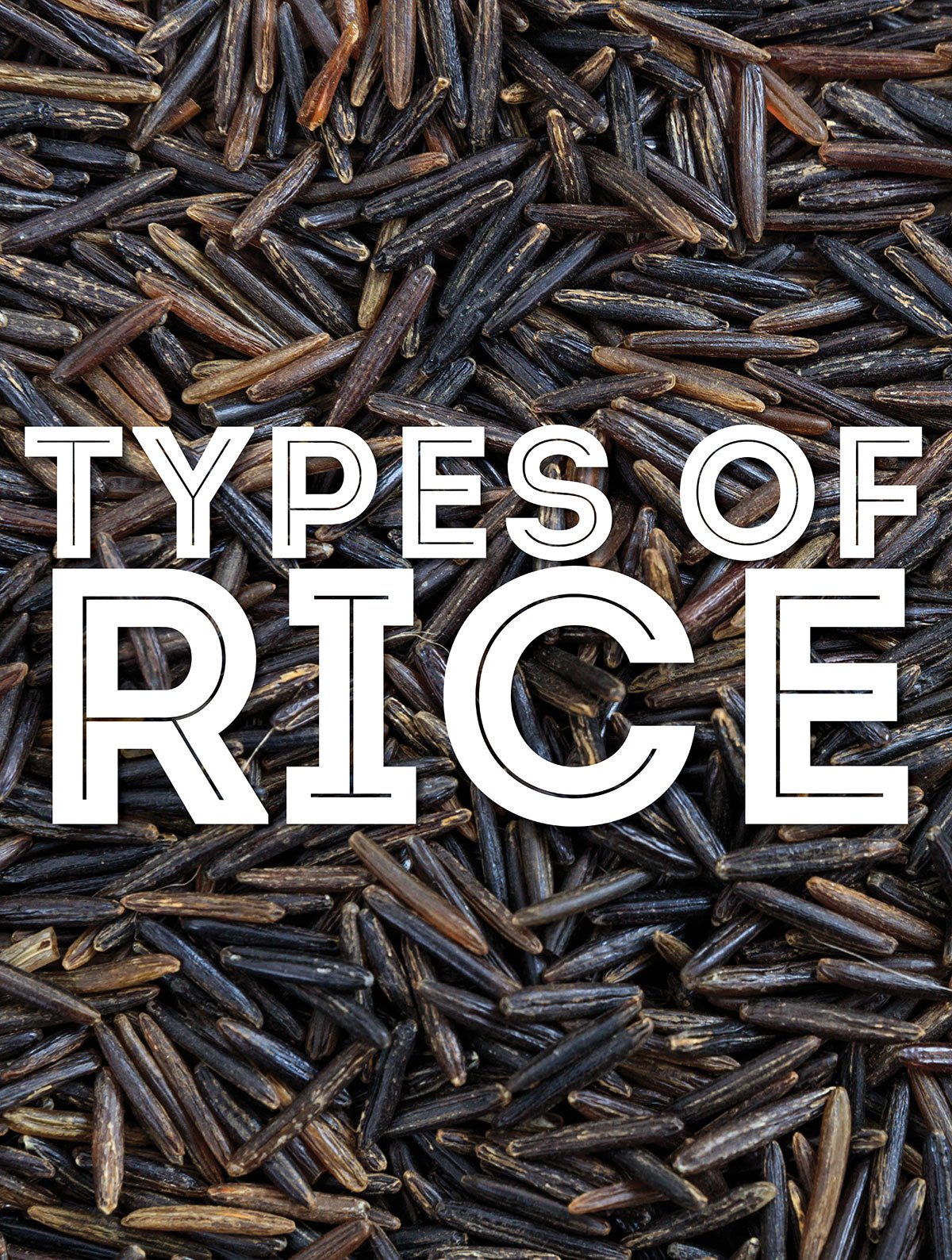
I once thought rice was boring. And I guess when you grow up eating white rice with butter, there’s not a way to avoid that (incorrect) opinion.
But rice has become so much more than plain as I’ve learned to cook with it and have explored different cuisines, like Indian, Mexican, and Korean. Rice can be a flavor vessel as a side dish, or it can be the star of the show!
Rice Trivia!
How many pounds of rice do people eat yearly worldwide? Hint: the USA consumes 27 lbs per person. Head to the bottom of this post for the answer!
- Different Types Of Rice Grains
- Four Parts to Every Grain of Rice
- Different Types of Rice
- Arborio Rice
- Aromatic Rice
- Basmati 370 Rice
- Basmati Rice
- Bhutanese Red Rice
- Bhutanese White Rice
- Biryani Rice
- Black Rice (Forbidden Rice)
- Bomba Rice
- Brown Basmati Rice
- Brown Rice
- California Blonde Rice
- Calrose Rice
- Camargue Red Rice
- Carnaroli Rice
- Cauliflower Rice
- Cinnamon Rice
- Coconut Rice
- Colusari Red Rice
- Doongara Rice
- Egyptian Black Rice
- Egyptian Rice
- Glutinous Black Rice (Black Sticky Rice)
- Glutinous Brown Rice (Brown Sticky Rice)
- Green Jade Bamboo Rice
- Himalayan Red Rice
- Indonesian Black Rice
- Italian Black Rice (Venere Rice)
- Jade Pearl Rice
- Jasmine Red Rice
- Jasmine Rice
- Kokuho Rose Rice
- Koshihikari Rice
- Mochi Rice (Sweet Rice or Glutinous Rice)
- Parboiled Rice
- Ponni Rice
- Purple Sticky Rice
- Red Rice
- Red Cargo Rice
- Riceberry Rice
- Rosanero Rice
- Saudee Rice
- Sinandomeng Rice
- Sticky Rice
- Sushi Rice
- Texmati Rice
- Valencia Rice (Arroz de Valencia)
- Wehani Rice
- White Rice
- Wild Rice
- Rice FAQs
Different Types Of Rice Grains
Rice grains can broadly be grouped into three types: long, medium, and short grain.
Long Grain Rice
These rice varieties are 3-5 times longer than they are wide and are light and fluffy when cooked. Long-grain rice is a versatile rice, and can be used in a wide range of dishes. It is often used for plain steamed rice, pilafs, stir-fries, and as a side dish for various meat and vegetable preparations.
Medium Grain Rice
Medium grains run somewhere in the middle, with a somewhat sticky, chewy and creamy texture. Medium grain rice is the go to for most risotto recipes and is also used in paella, rice puddings, and rice-based salads.
Short Grain Rice
These are not more than twice as long as they are wide, and are often a good bit less. Short grain is generally soft and sticky once cooked, and as you will see in the descriptions are often used in dishes where a sticky texture is desired, such as sushi, rice balls (onigiri), rice puddings, and rice-based desserts.
Four Parts to Every Grain of Rice
Each rice grain contains four components: The hull, bran, white, and germ.
Hull
The hull or husk is the hard protective covering on grains of rice. It protects the rice from pests while it grows. During the milling process, the hulls are removed exposing the whole brown rice. During the milling processes, the hulls are removed from the raw grain to reveal whole brown rice, which is then usually milled further to remove the bran layer.
Bran
With the hull removed the brown bran layer is exposed. This is generally, but not always, also removed. If removed, it is often used to make bran oil or used as animal feed. The bran layer is edible while the hull is not.
White Rice
With the bran and hull removed the white rice, or endosperm, remains. This is the part we mostly eat.
Germ
The final component of rice is the germ, or rice kernel. The germ is only about 1% of the weight of rice, but contains most of the vitamins and minerals and over 30% of the oil.
Different Types of Rice
There are two major sub species of rice; Indica and Japonica. Indica rice varieties are generally long grain, and Japonica are medium or short grains.
Our list includes some pretty exotic varieties of rice that you won’t find at your local grocery, but if your city has a good international market you will likely find many.
Arborio Rice
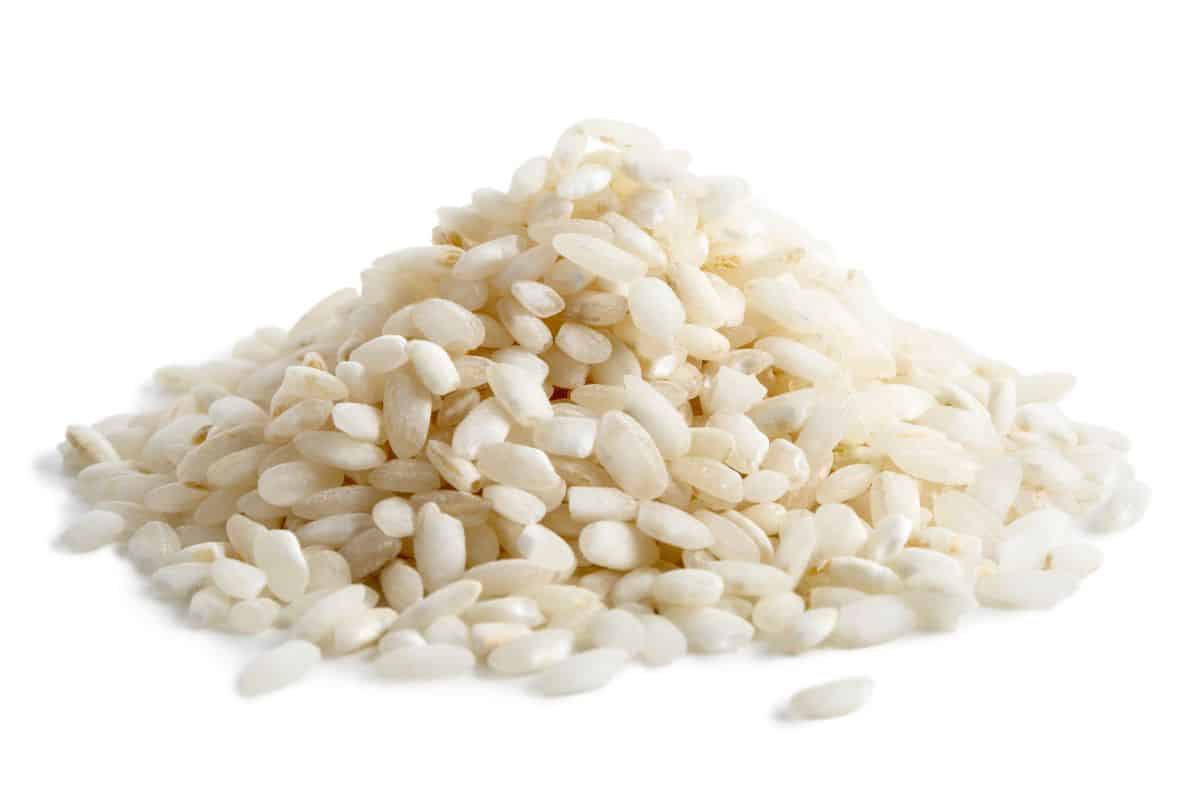
Origin: Arborio rice is an Italian variety of short-grain rice named after the town of Arborio in the Po Valley region of northern Italy.
Aroma and Flavor: It is a short-grain rice with a mild flavor and high starch content. This gives it a creamy and slightly chewy texture when cooked, and allows it to absorb the flavor of other ingredients well.
Uses: Arborio rice is primarily used in making risotto, a classic Italian dish in which the rice is cooked slowly in broth and stirred to release its starch, creating a creamy consistency. It is also used in rice pudding and other creamy rice-based dishes. We love risotto around here (see lemon risotto, truffle risotto, butternut squash risotto).
Aromatic Rice
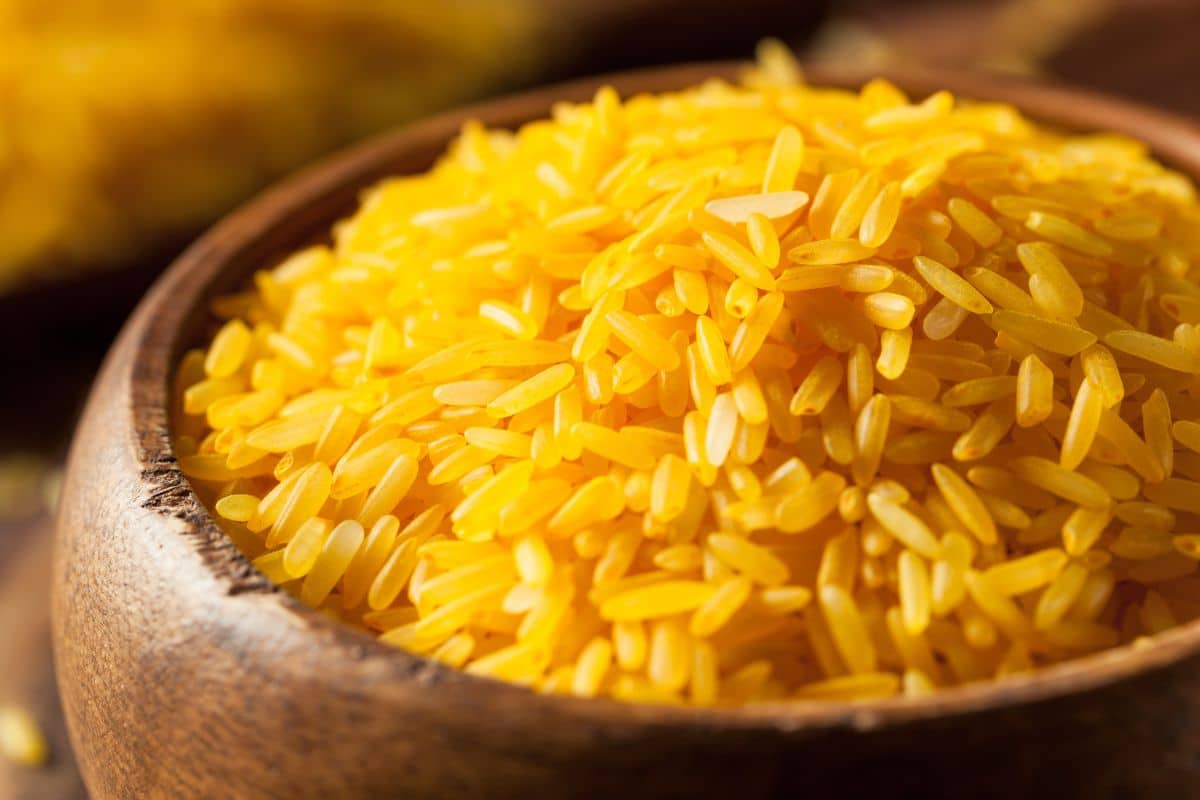
Origin: “Aromatic rice” is a broad term used to describe several types of rice with a distinct fragrance and flavor. Different varieties come from different regions around the world. It can vary from short to medium-grain depending on the specific variety.
Aroma and Flavor: Aromatic rice types have a characteristic aroma and flavor that is often described as floral or perfumed. When cooked the texture can vary based on the specific type, but aromatic rice is generally firm and slightly sticky.
Uses: Aromatic rice is popular in various cuisines and dishes, including Indian biryanis, Thai coconut rice, Middle Eastern pilafs, and other rice-based recipes where the fragrance of the rice enhances the overall dish.
Basmati 370 Rice
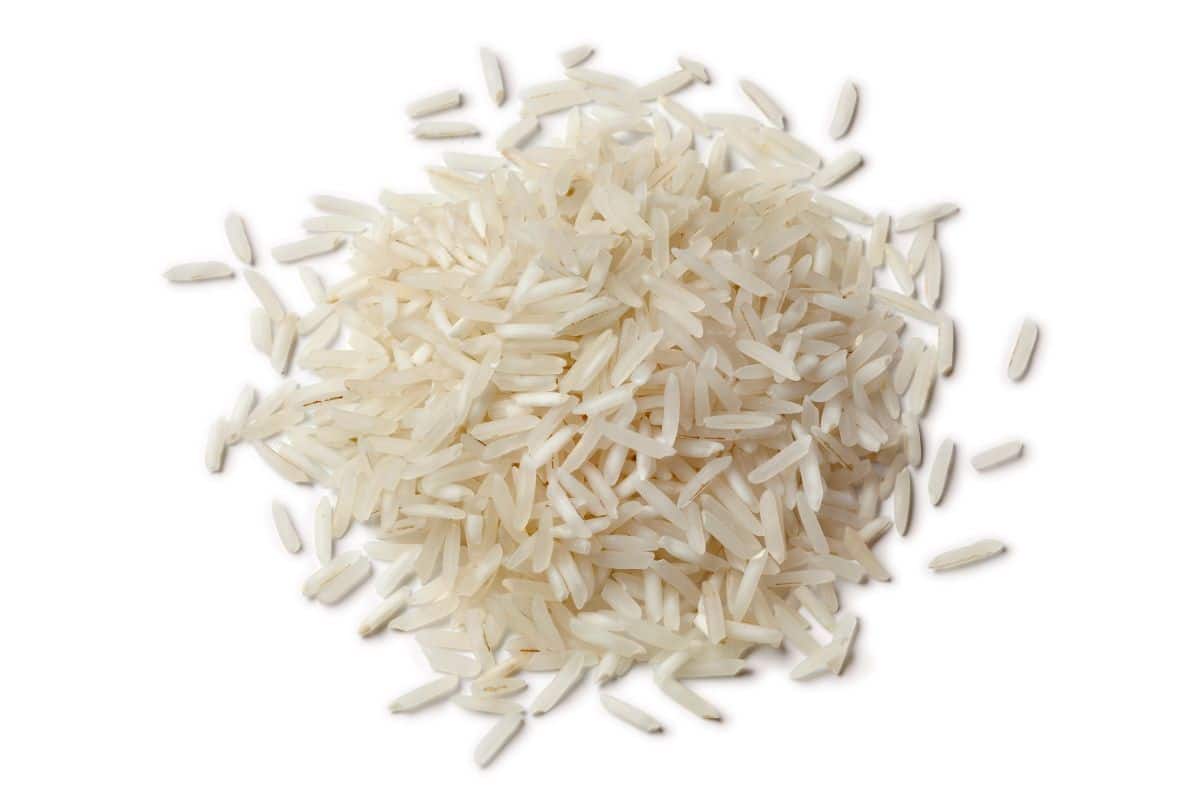
Origin and Flavor: Basmati 370 is a specific variety of basmati rice that originates from India. It is a long-grain rice known for its exceptional aroma and delicate, nutty flavor. When cooked it remains long and slender, with separate grains that are fluffy and not sticky.
Uses: Like other basmati rice varieties, Basmati 370 is commonly used in Indian, Pakistani, and Middle Eastern cuisine. It is a popular choice for dishes like biryanis, pilafs, and plain steamed rice served alongside various curries.
Basmati Rice
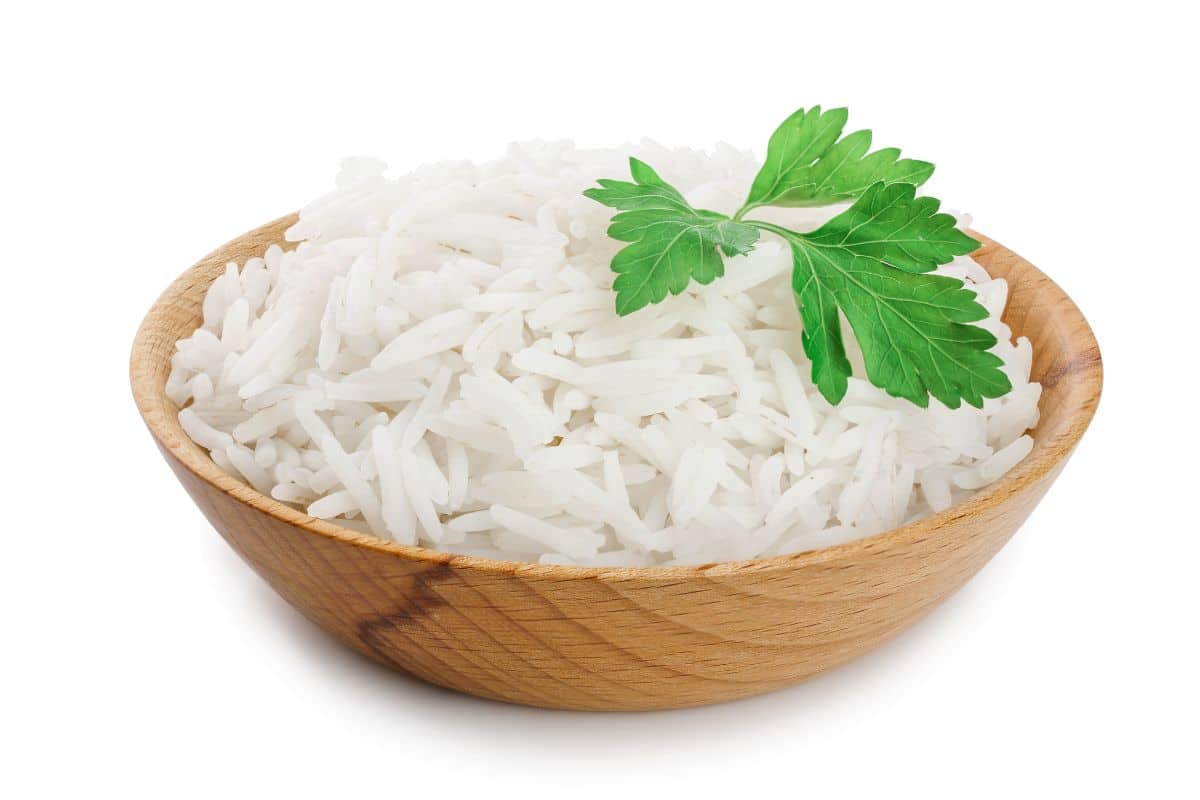
Origin: Basmati rice is a premium long-grain rice variety primarily grown in the Indian subcontinent, with India and Pakistan being the main producers.
Aroma and Flavor: Basmati rice is prized for its unique and characteristic fragrance, often described as nutty or popcorn-like. It cooks into separate, fluffy grains with a light and airy texture, making it a preferred choice for special rice dishes.
Uses: Basmati rice is widely used in many traditional South Asian and Middle Eastern dishes, such as biryanis, pulaos, pilafs, and of course curry.
Bhutanese Red Rice
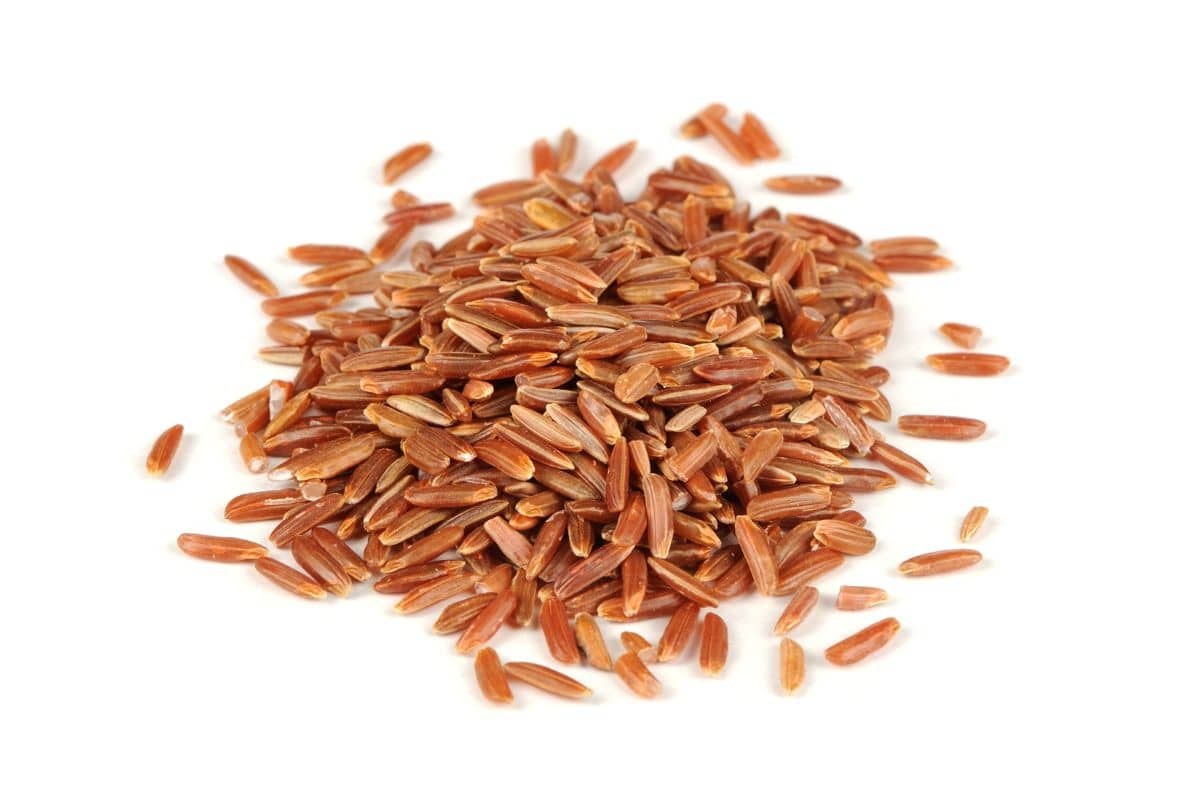
Origin and Flavor: Bhutanese red rice is a variety native to the Himalayan Kingdom of Bhutan. This rice is usually classified as a medium-grain rice, and has a nutty, earthy flavor with subtle sweetness. Bhutanese red rice cooks up slightly chewy and sticky, similar to other short-grain rice varieties.
Uses: In Bhutan, this rice is a staple and served with various dishes. It can be used in salads, side dishes, or as a base for meat and vegetable dishes. The nice thing about rice is it travels well, so like many other exotic rices you can find this one on Amazon.
Bhutanese White Rice
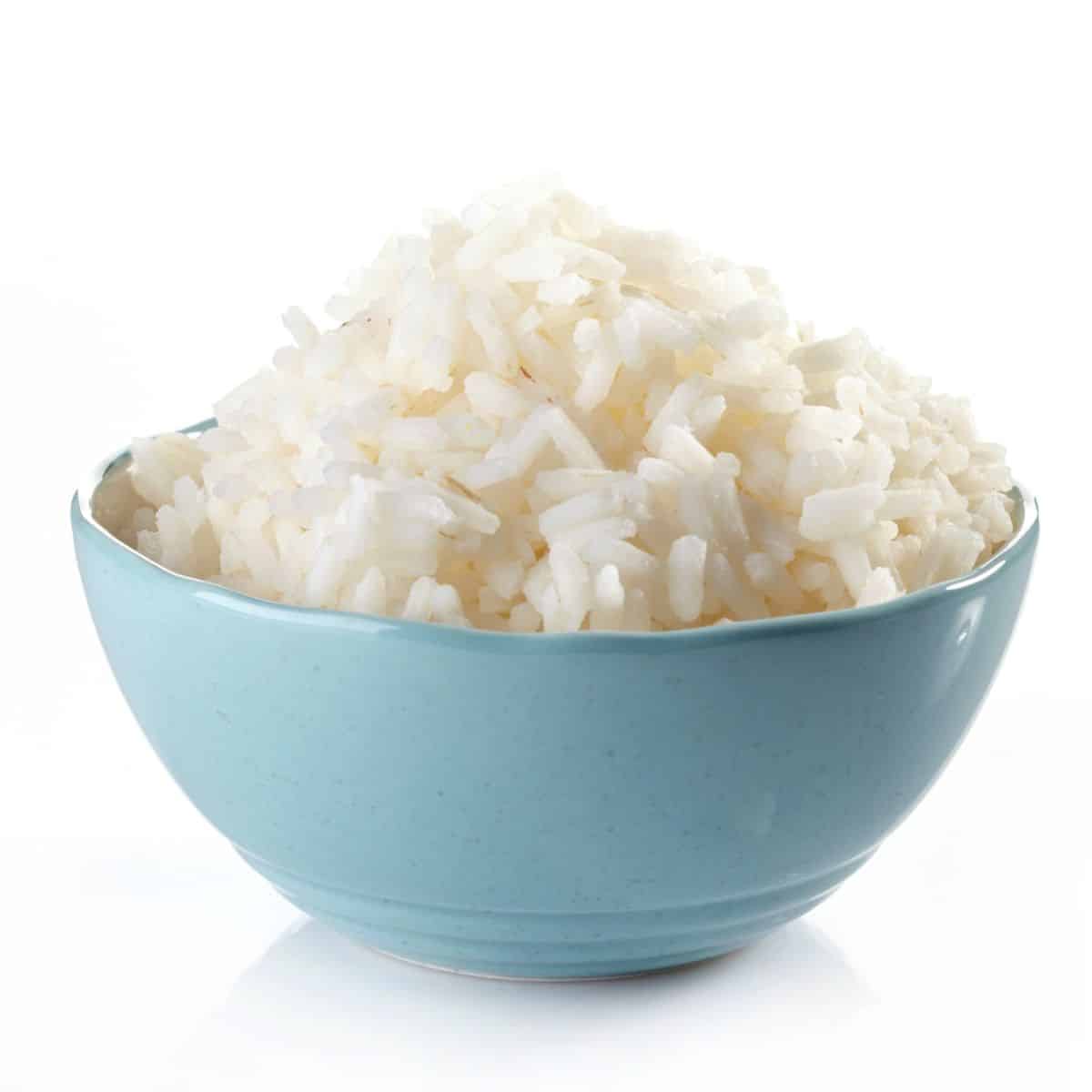
Origin: Bhutanese white rice comes from the Himalayan Kingdom of Bhutan, just like its red counterpart. It too is usually classified as medium-grain rice, and has a mild, subtle flavor with a slight nuttiness. When cooked, it becomes tender and slightly sticky.
Uses: Bhutanese white rice is a staple in Bhutanese cuisine and is served with a variety of dishes, including curries, stews, and vegetable preparations.
Biryani Rice
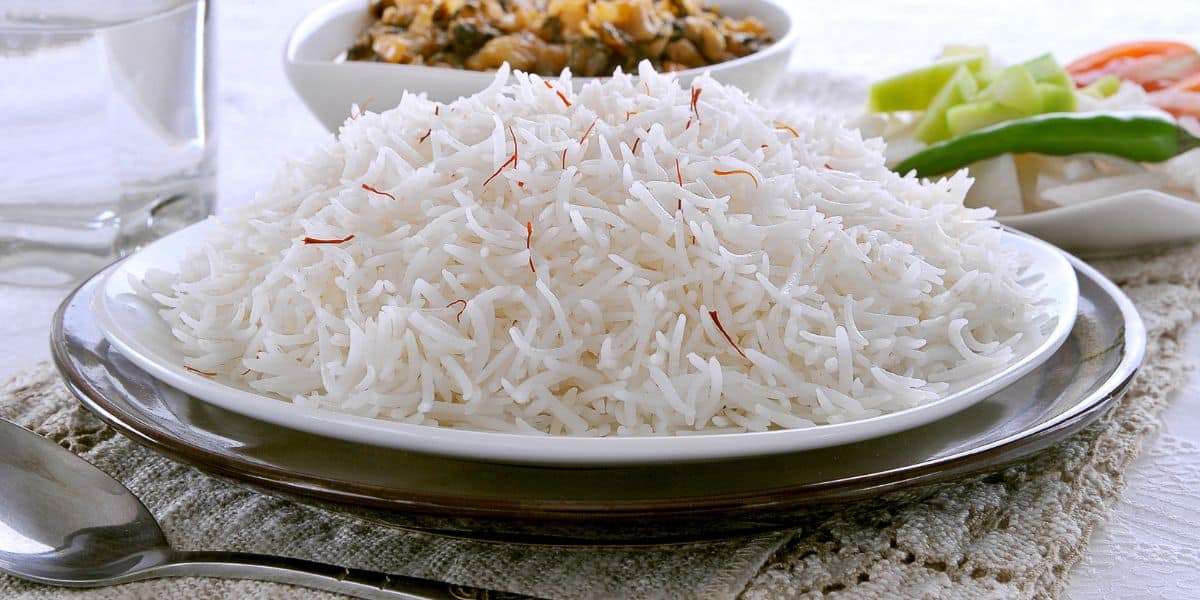
Origin: Biryani rice is not a specific variety but rather a term used to refer to long-grain rice used in making biryanis, a popular rice dish in South Asia and the Middle East.
Aroma and Flavor: This long-grain rice is often aged to enhance its flavor, which is delicate and aromatic. When cooked the grains of biryani rice stay separate and fluffy, making it ideal for layered rice dishes like biryanis.
Uses: At the risk of redundancy biryani rice is a key component in various biryani recipes, where it is layered with meat, vegetables, and a mix of spices before being cooked together to create a flavorful and aromatic one-pot dish.
Black Rice (Forbidden Rice)
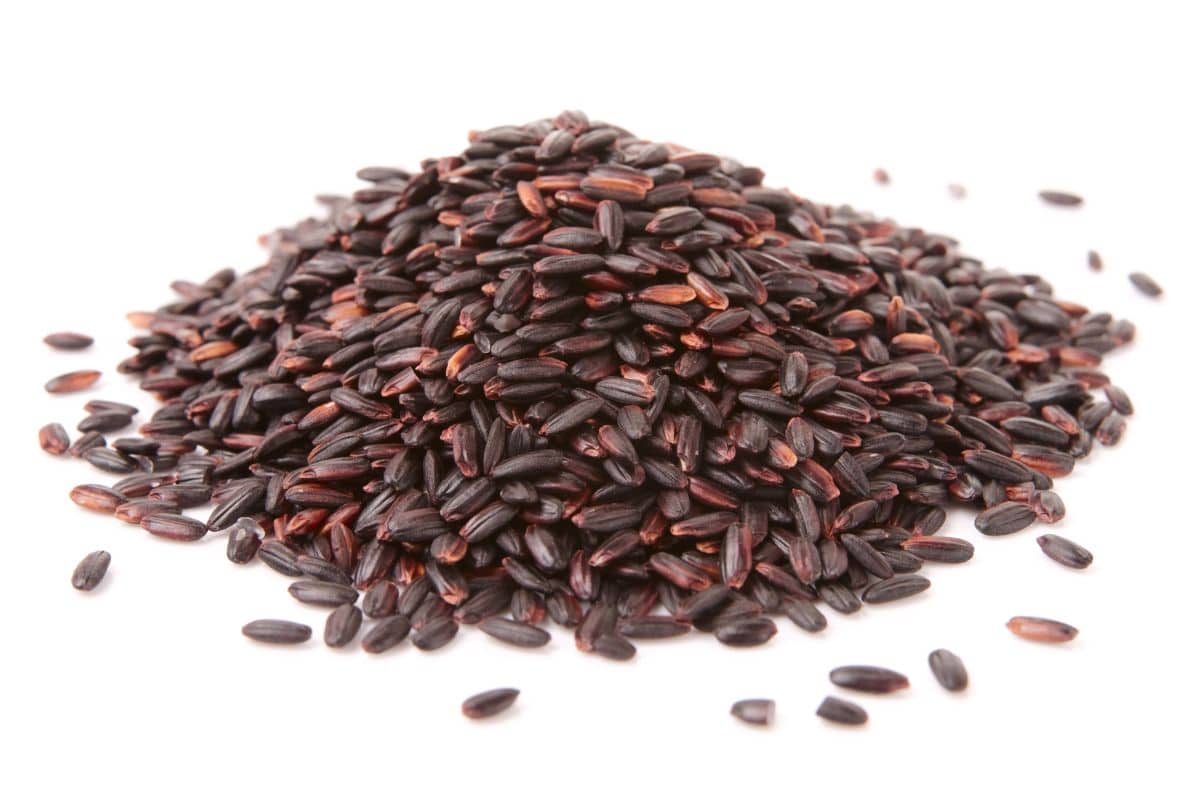
Origin: Black rice has its origins in ancient China and was once considered a rare and precious grain, hence the name “forbidden rice” as it was reserved for Chinese royalty. Today it is grown in many nations and you too can be royalty as you can get Forbidden Rice on Amazon.
Aroma and Flavor: Black rice is generally classified as long-grain rice, though there are some medium-grain varieties as well. It has a nutty and slightly sweet flavor profile, and when cooked, black rice turns a deep purple color and has a slightly chewy texture.
Uses: Black rice is used in various Asian cuisines, especially in dessert dishes like rice puddings, porridges, and sweet rice-based treats. It is also used in savory dishes to add a unique visual appeal and flavor. We think the intriguing color makes it a good option for creating a unique presentation in any of our favorite 19 Vegetarian Rice Recipes.
Nutritional Value: Black rice may also be one of the healthiest varieties of rice you can find. The black to purple color is due to the high level of anthocyanins it contains. These antioxidants have been shown to reduce inflammation, blood sugar, and perhaps the incidence of cancer. Those ancient Chinese royals were keeping the good rice for themselves.
Bomba Rice
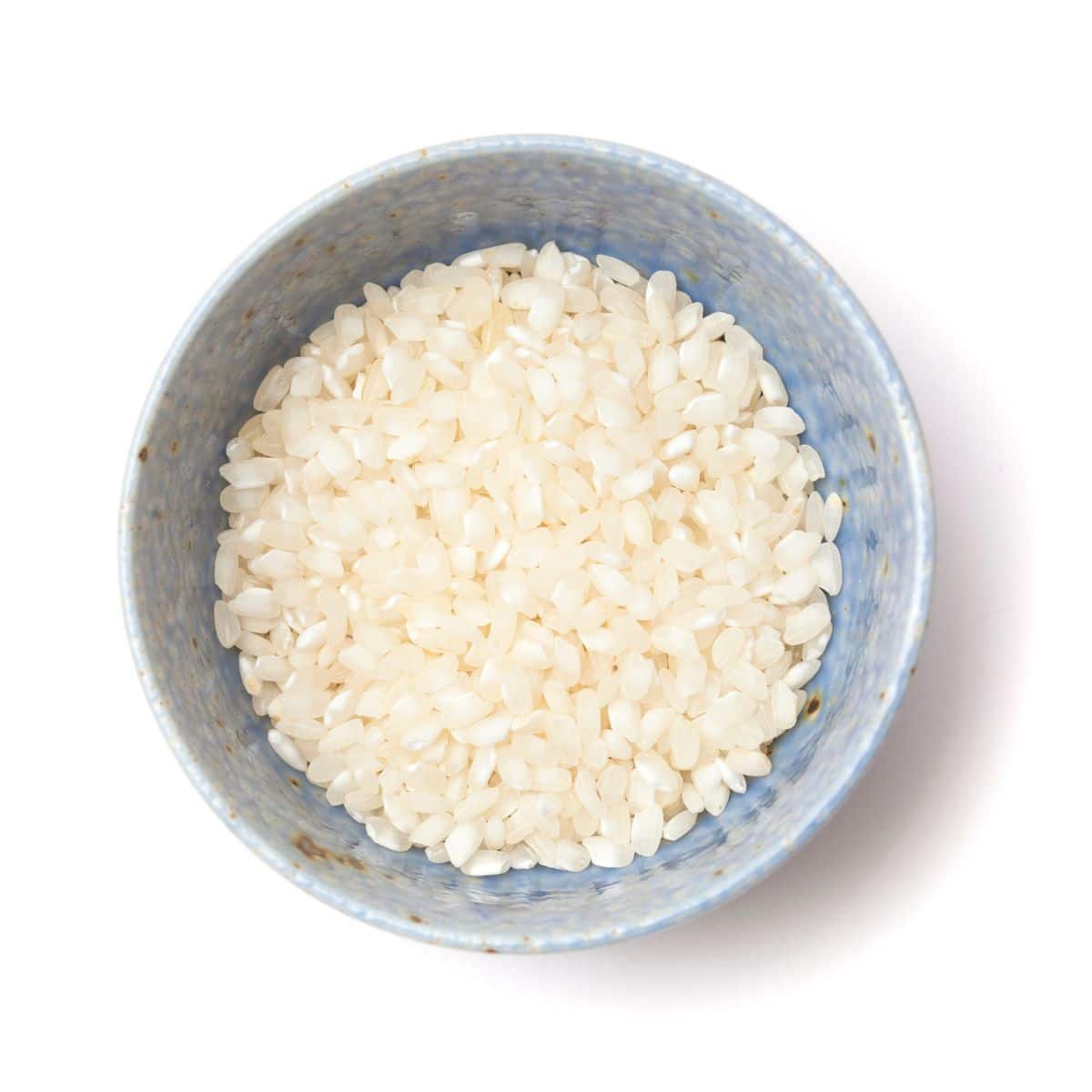
Origin: Bomba rice hails from Spain, where it is traditionally used in paella, a famous Spanish rice dish. It is a short-grain rice known for its superb ability to absorb flavors. When cooked it has a firm and chewy texture with each grain maintaining its structure and not sticking together. This is due to the amylose contained in Bomba.
Uses: Bomba rice is most famous for its use in paella, a traditional Spanish dish that typically includes rice, saffron, various meats or seafood, and vegetables.
Brown Basmati Rice
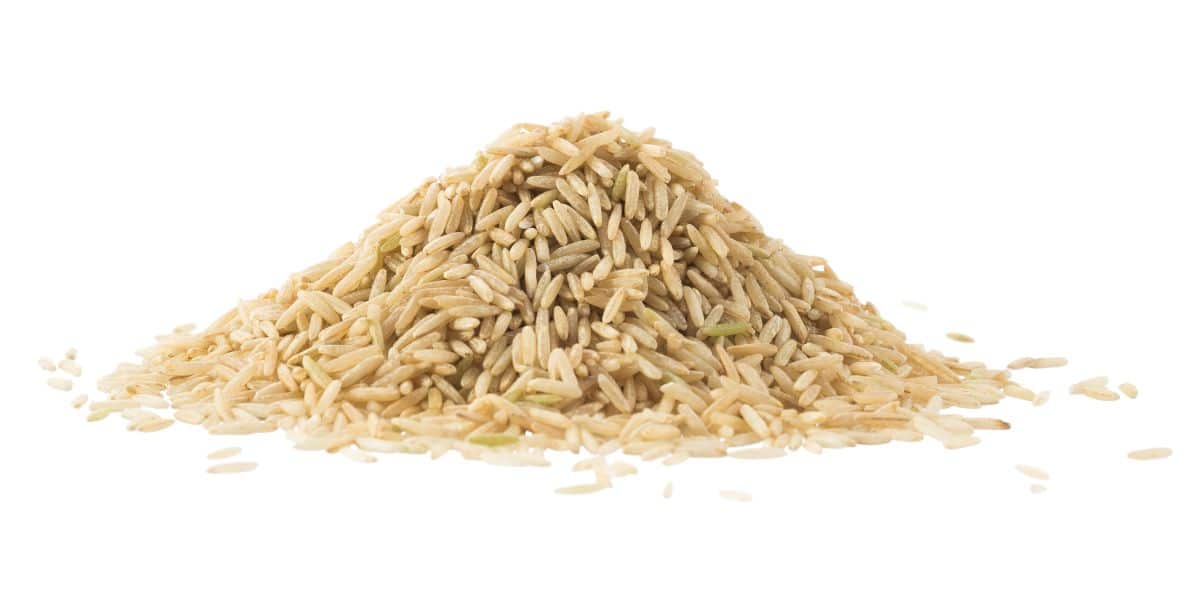
Origin: Brown basmati rice is derived from the same plant as traditional white basmati rice, but with the bran layer left intact. It is a long-grain rice that retains the nutty flavor of traditional basmati rice but has a slightly earthier taste due to the presence of the bran layer.
Flavor: Brown basmati rice is a healthier alternative to white rice, providing more fiber and nutrients. It can be used in various rice-based dishes, especially where its nutty flavor can complement the overall dish.
Brown Rice
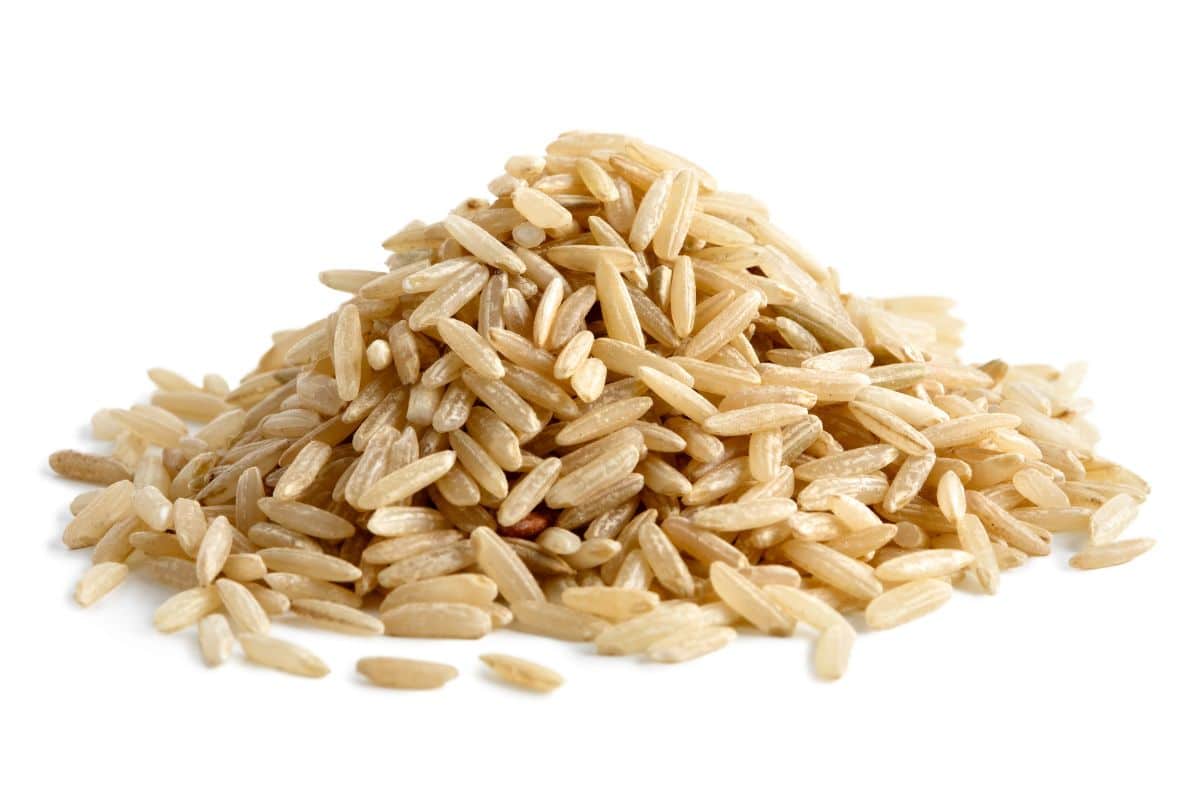
Origin: Brown rice is a whole grain rice that comes from the same plant as white rice. It is the unrefined version of rice, with only the outermost hull removed and the brown bran layer remaining. This gives it its tan color.
Aroma and Flavor: Brown rice can be found in long, medium, and short-grain varieties, depending on the specific type. Brown rice has a nuttier and more pronounced flavor compared to white rice, and when cooked, brown rice retains its outer bran layer, resulting in a slightly chewy texture and a firm, separate grain structure.
Uses: Brown rice is a healthier alternative to white rice because it retains more fiber, vitamins, and minerals. It is used in various dishes like salads, grain bowls, stir fries, and as a side dish for meats and vegetables.
California Blonde Rice
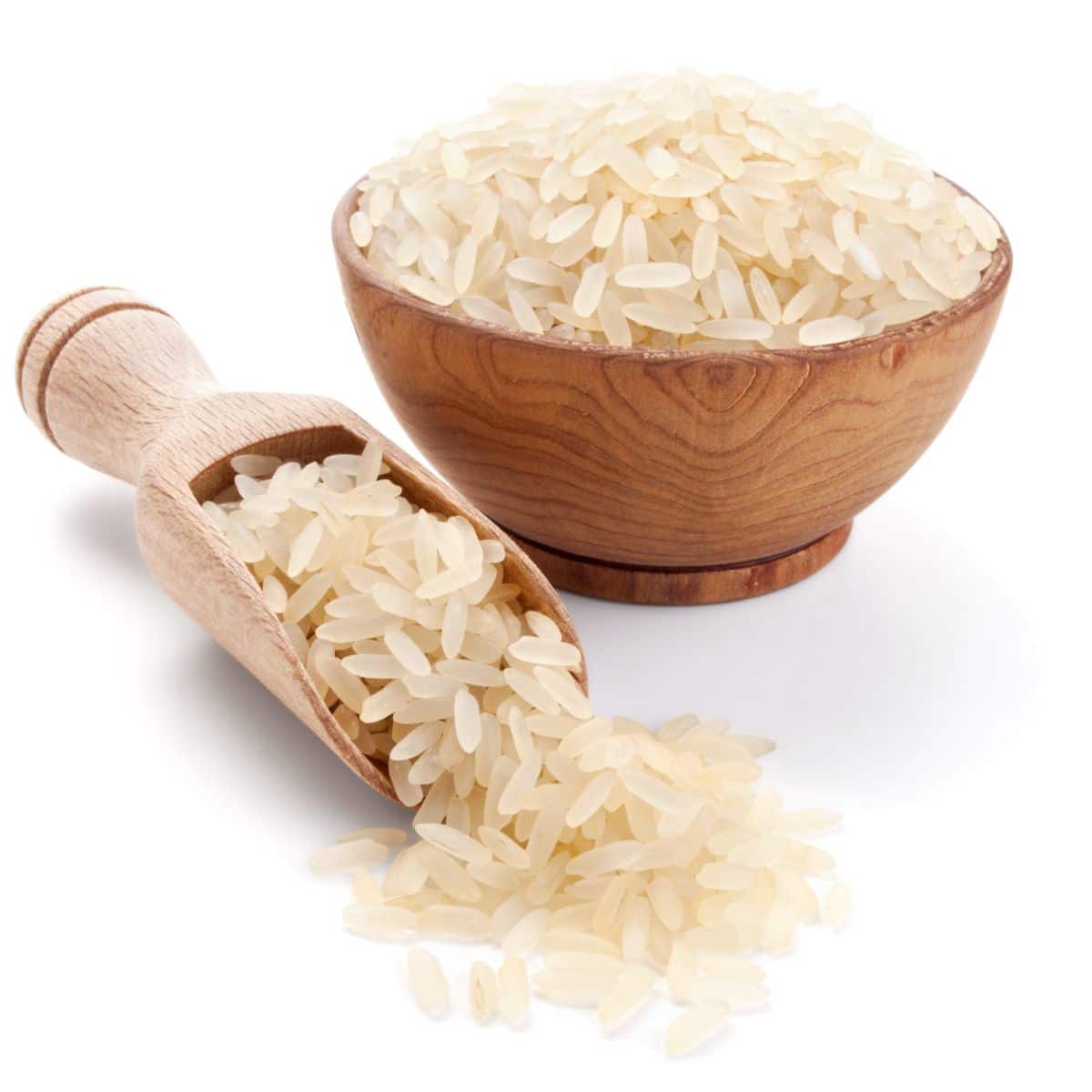
Origin: California blonde rice is a medium-grain rice variety grown in California. It has a mild, clean taste with subtle nutty undertones. Once cooked, it becomes slightly sticky and holds together well.
Uses: California blonde rice is a versatile rice that can be used in various dishes, such as pilafs, casseroles, and rice-based desserts.
Calrose Rice
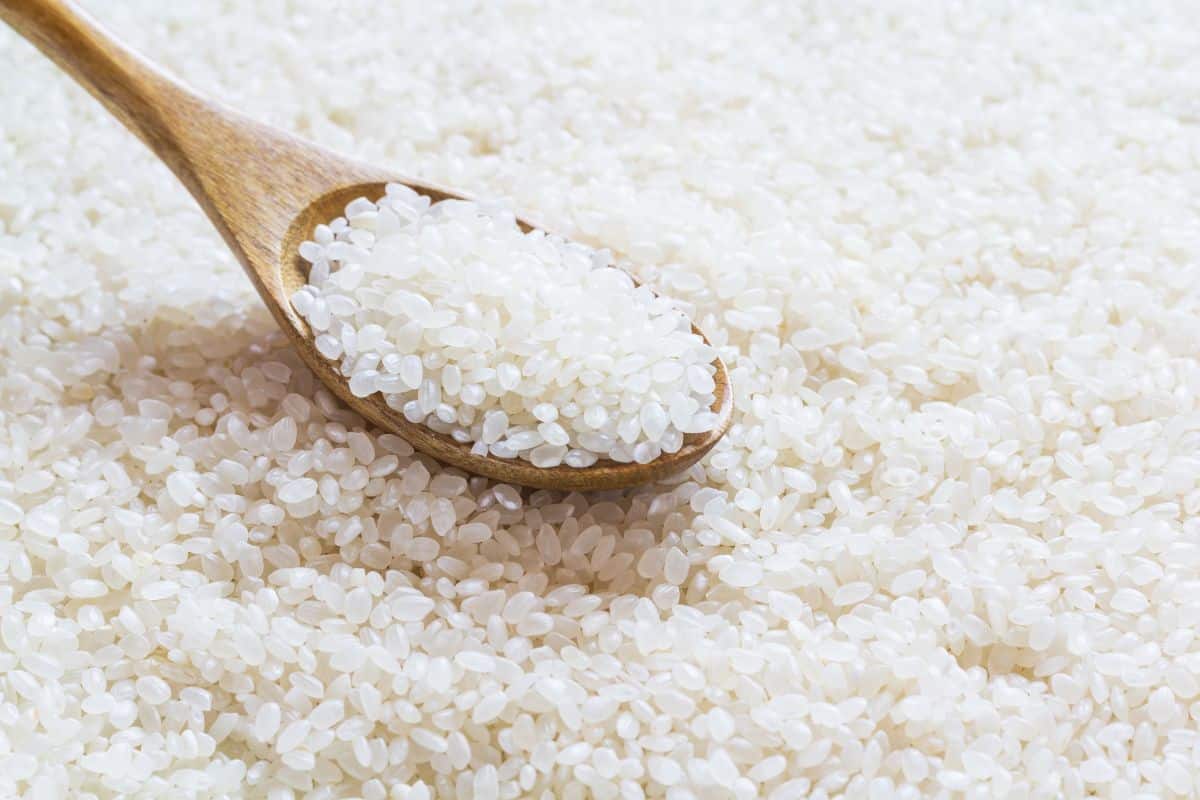
Origin: Calrose rice was developed in California in the early 1940s through cross breeding different rice varieties. Today it constitutes 80% of the rice grown in California. It is a medium-grain rice with a mild flavor and is often considered a neutral-tasting rice.
Flavor and Uses: When cooked, calrose rice becomes slightly sticky and has a tender texture, making it ideal for sushi and other Asian rice dishes. Calrose rice is widely used in Japanese and other Asian cuisines, including sushi, rice bowls, and as a side dish for various savory dishes.
Camargue Red Rice
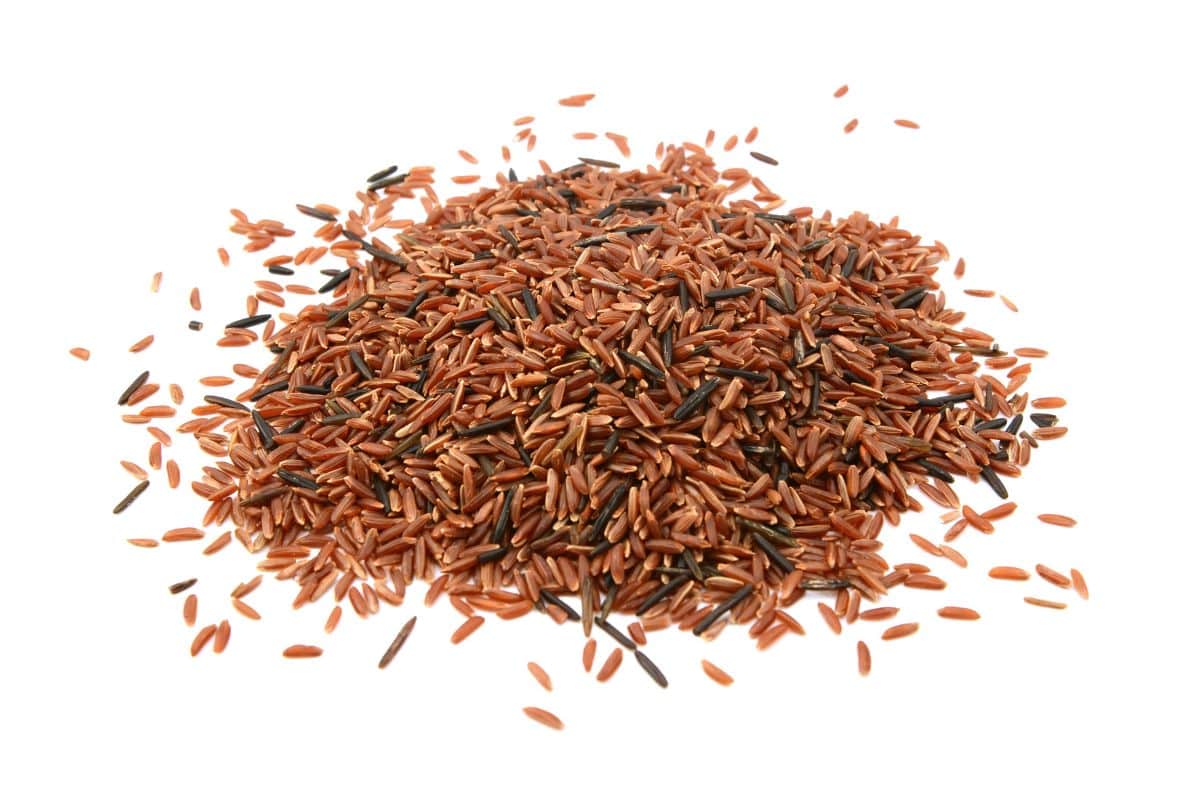
Origin: Camargue red rice originates from the Camargue region in southern France, near the Rhône River delta. It is a long-grain rice with a nutty and earthy flavor. When cooked, it retains its firmness and has a chewy texture.
Uses: Camargue red rice is often used as a side dish or in salads, and it pairs well with a variety of ingredients, including vegetables, meats, and seafood.
Carnaroli Rice
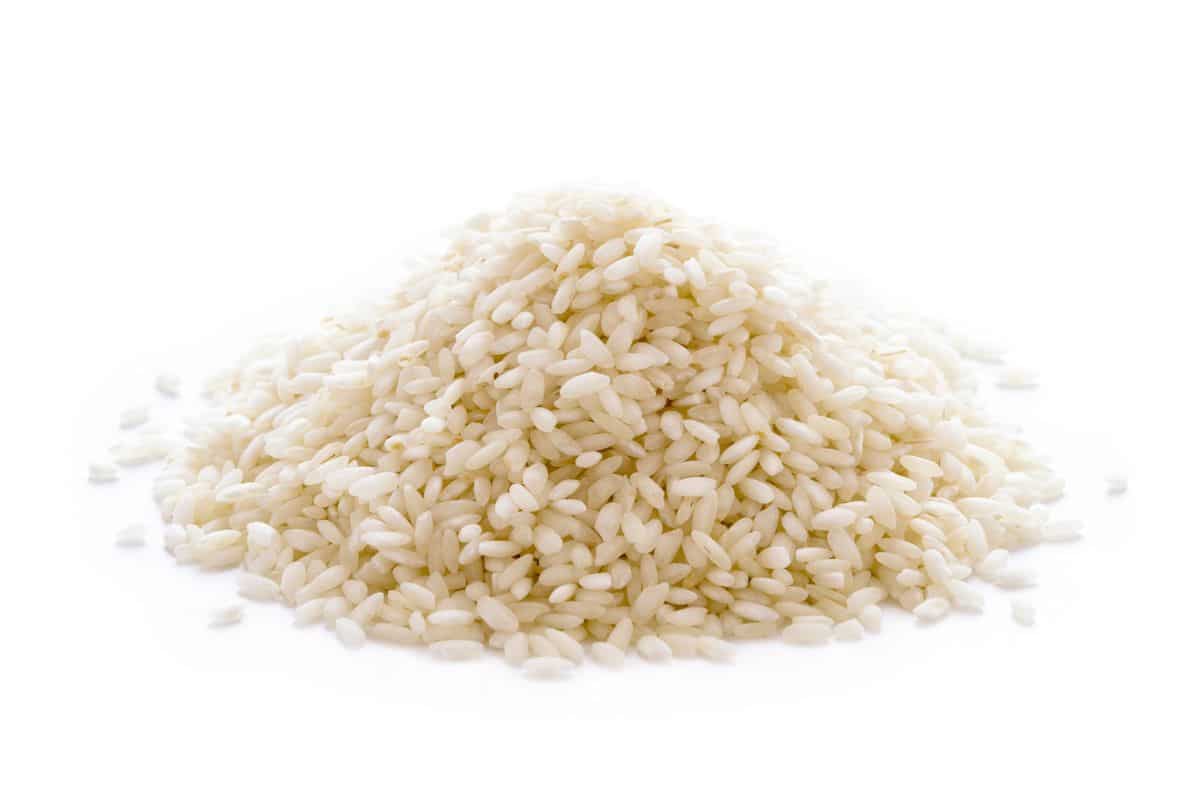
Origin: Carnaroli rice is an Italian variety of rice, often referred to as the “king of rice” due to its preferred use in making risotto.
Flavor: It is a medium-grain rice with a subtle flavor and is known for its ability to absorb flavors from the broth or other ingredients. It has a high starch content, which gives it a creamy texture when cooked, while the grains remain firm and separate.
Uses: Again, carnaroli rice is most commonly used in making risotto, a classic Italian dish where the rice is slowly cooked with broth and other ingredients to achieve a creamy consistency.
Cauliflower Rice
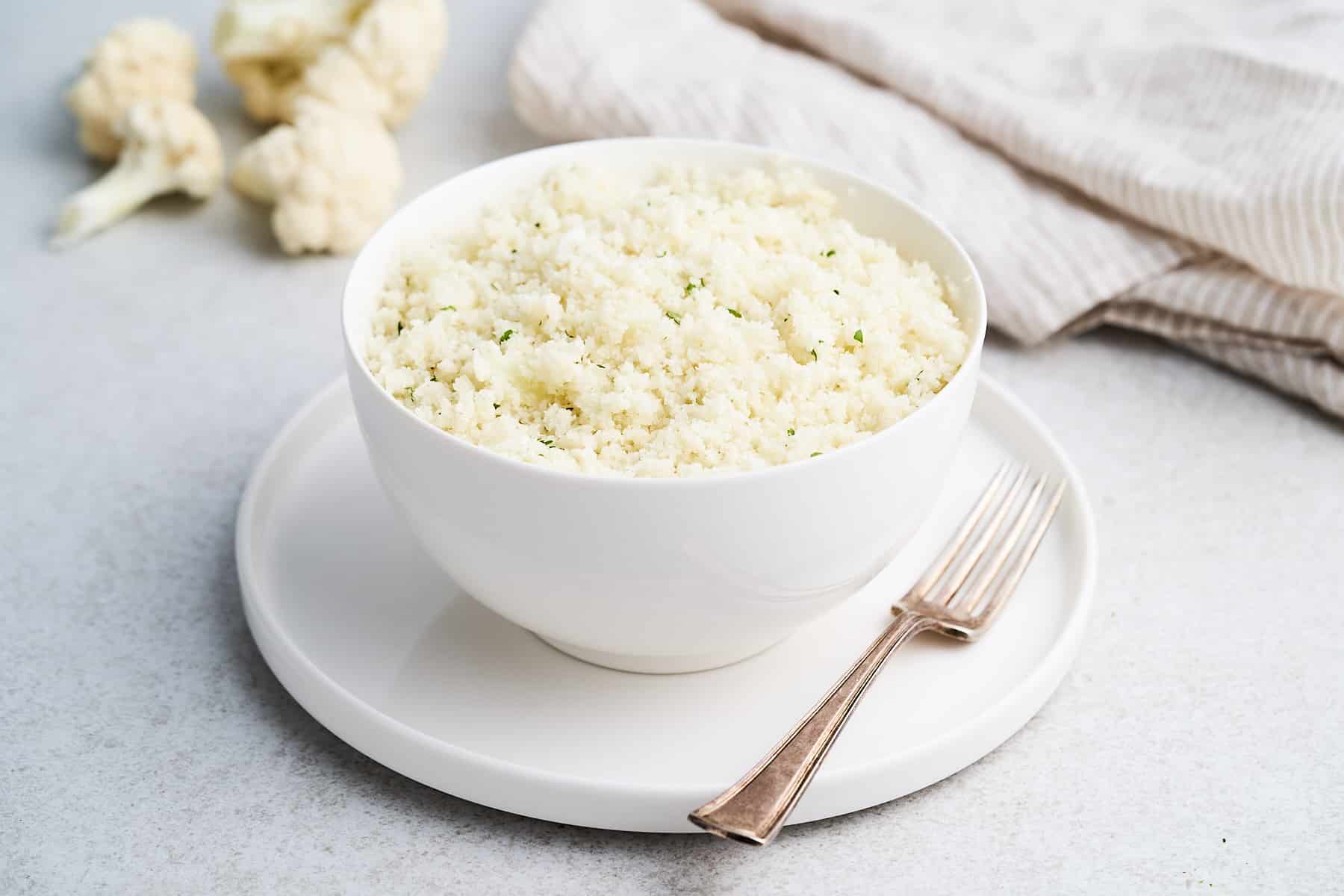
Okay this is cheating. Cauliflower is most definitely neither rice nor grain. It does, however, grate into an acceptable (to some not all) rice substitute. The high carbohydrate content of rice makes it a poor option for keto or other low carb diets. Replacing it with riced cauliflower changes that entirely.
A 6 ounce serving of riced cauliflower only has about 40 calories and is loaded with fiber, vitamins, and minerals. It is simple to make cauliflower rice (along with its cousin, broccoli rice!)
Cinnamon Rice
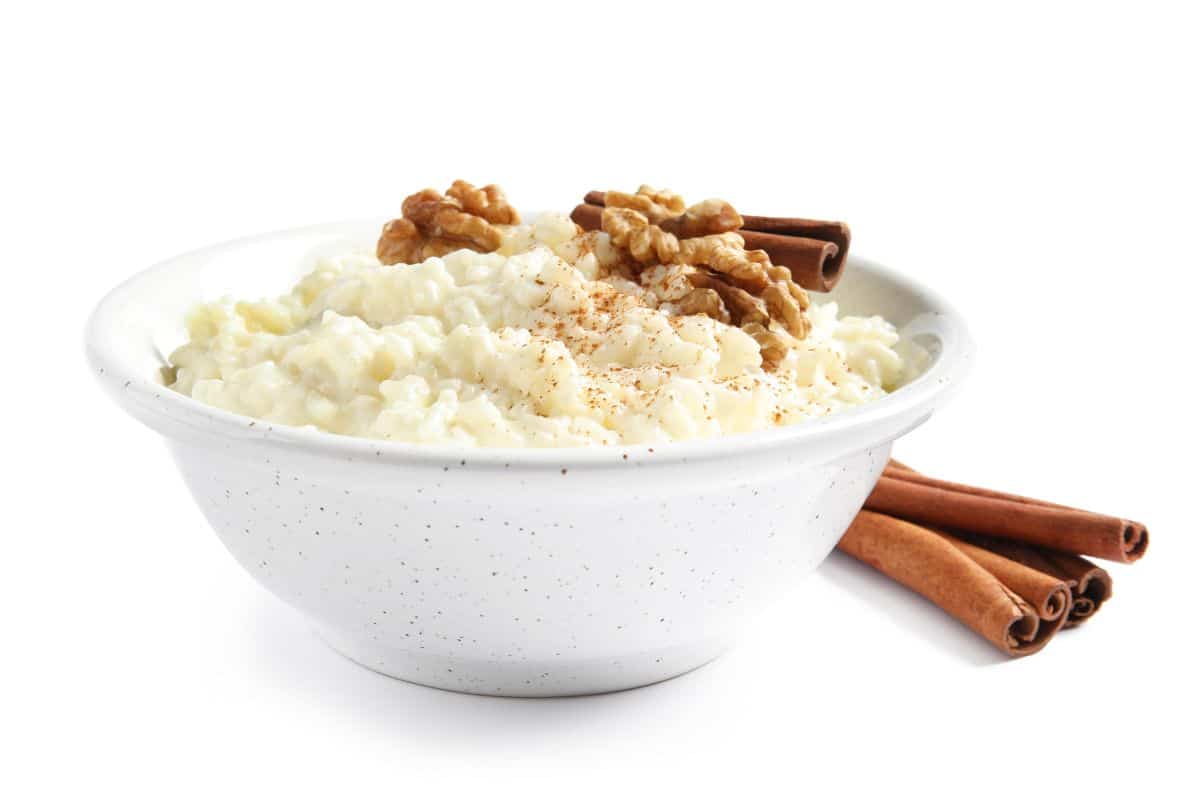
Origin: Cinnamon rice is not a specific rice variety but rather a rice dish flavored with cinnamon. It is found in various cuisines worldwide. The type of rice used in cinnamon rice dishes can vary, but it is often made with long-grain or medium-grain rice.
Flavor: The flavor profile is, obviously, influenced by the use of cinnamon, providing a warm, aromatic, and slightly sweet taste. The texture of cinnamon rice depends on the rice variety used, but it is generally tender and separate when cooked.
Uses: Cinnamon rice is often served as a side dish or dessert, and it complements a wide range of savory dishes and sweet treats in different culinary traditions.
Coconut Rice
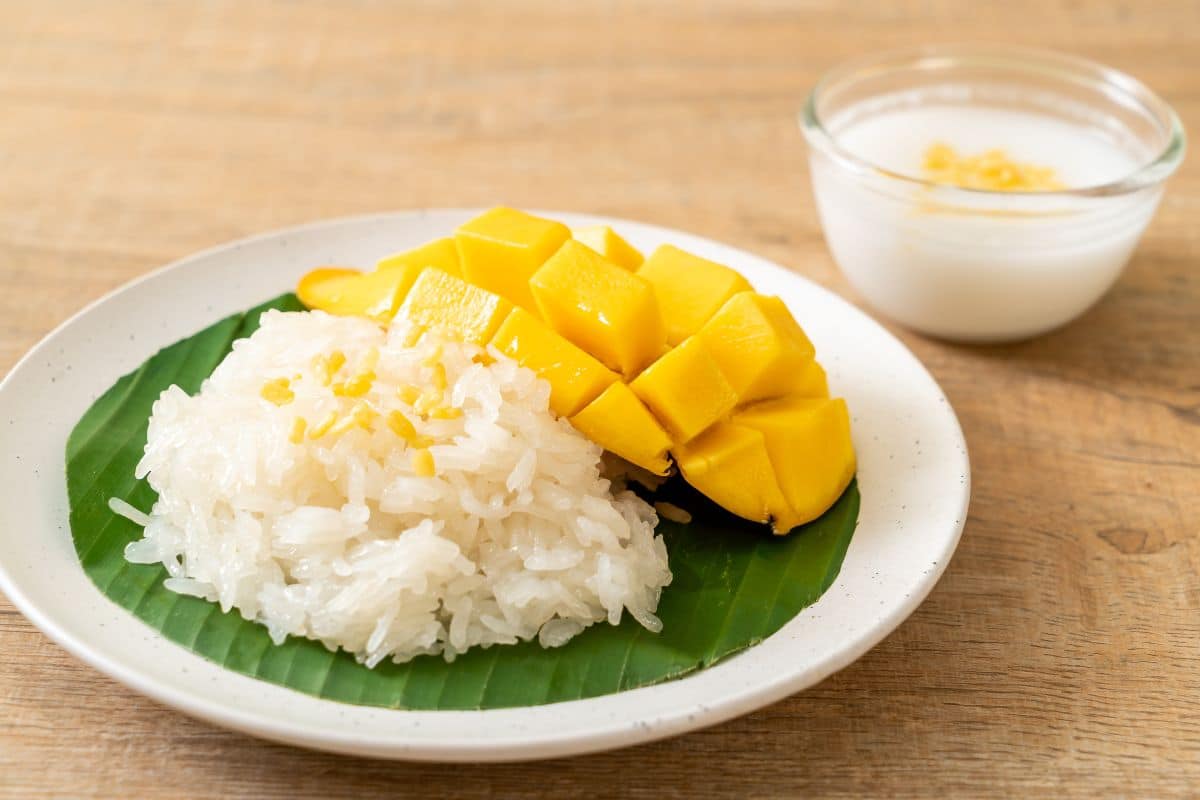
Origin and Flavor: Coconut rice is a popular dish in many tropical and Asian countries, particularly those with coconut trees. It is most commonly made with long-grain or medium-grain rice. Coconut rice has a delightful coconut flavor, with the richness of coconut milk infusing the rice. When Cooked it has a soft, moist, and slightly sticky texture.
Uses: Coconut rice is often served as a side dish with various savory dishes, especially those with strong flavors like curries or grilled meats. It is also enjoyed as a sweet dish, particularly when paired with tropical fruits or as a dessert with a drizzle of syrup. You might try it in our Thai Coconut Curry.
Colusari Red Rice
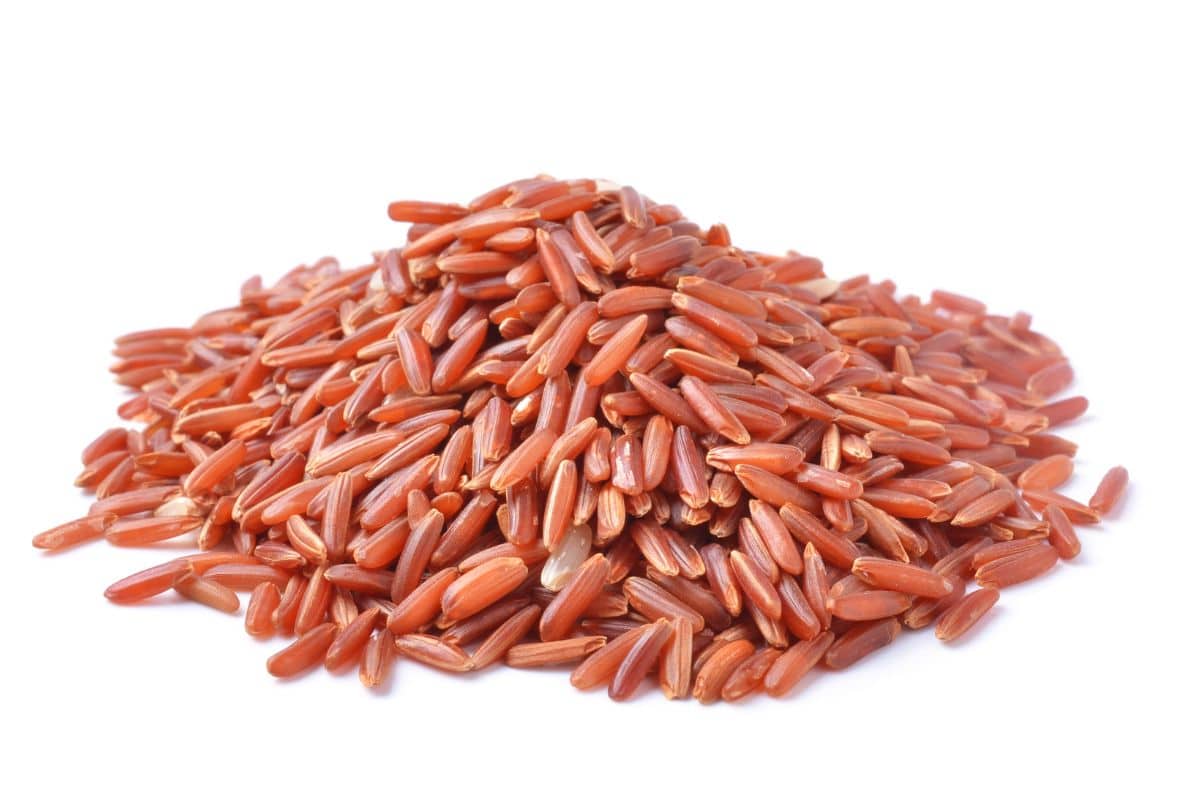
Origin: Colusari red rice is a unique variety originally from Southeast Asia, specifically Bhutan, and has gained popularity in other regions as well.
Aroma and Flavor: Colusari red rice is a medium-grain rice with a nutty and earthy flavor, similar to other red rice varieties. When cooked, Colusari red rice becomes tender with a slightly chewy texture.
Uses: Colusari red rice is often used as a side dish, in salads, or as an accompaniment to various meat and vegetable dishes.
Doongara Rice
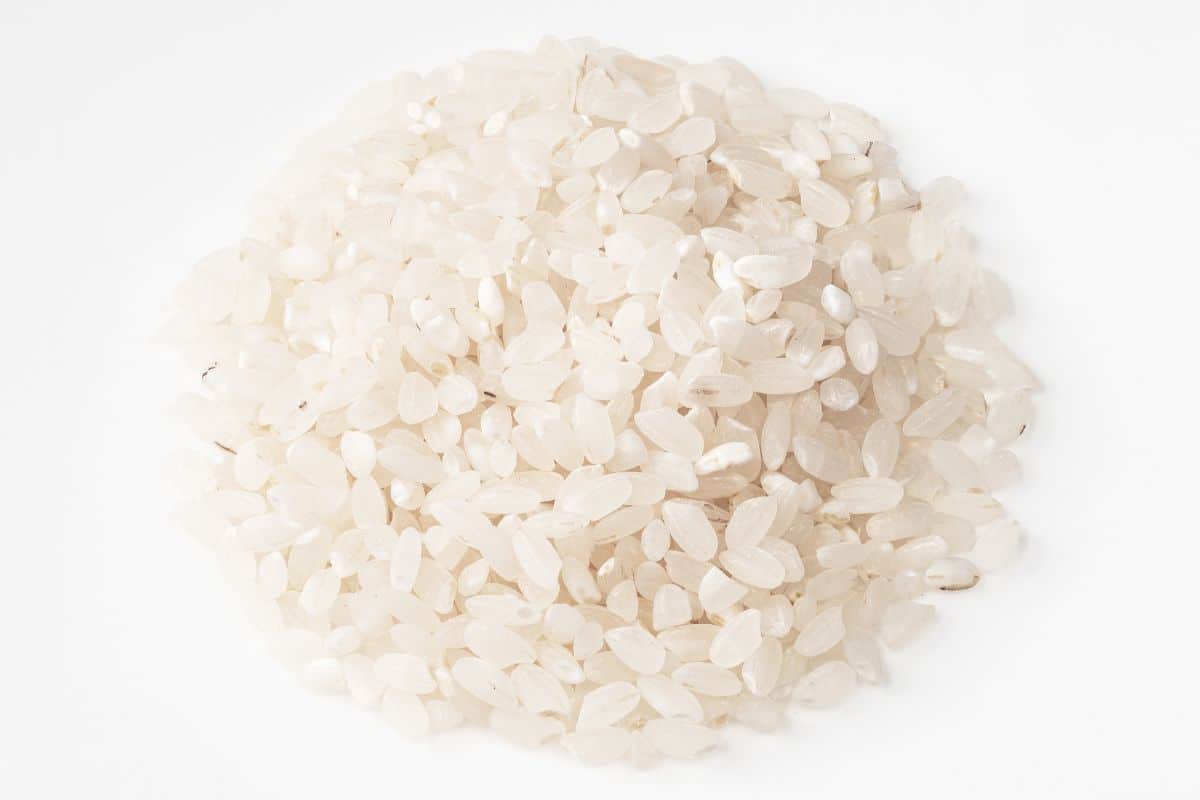
Origin: Doongara rice was developed in Australia and is known for its improved nutritional profile. It is a medium-grain rice with a mild and delicate flavor. When cooked, Doongara rice becomes fluffy with separate grains.
Uses: Doongara rice is used in a variety of dishes where medium-grain rice is preferred, such as stir-fries, rice bowls, and pilafs. Doongara has a unique starch structure making it a naturally low GI food providing slower sustained energy release.
Egyptian Black Rice
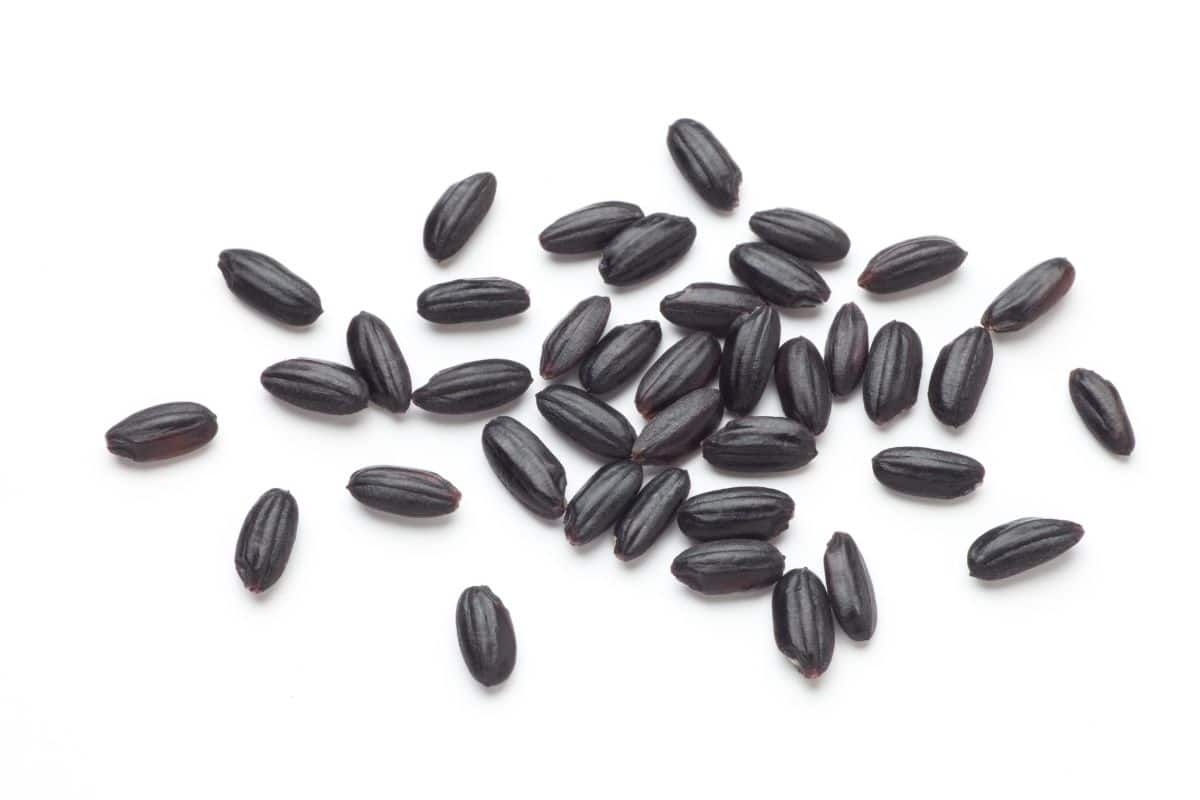
Origin and Flavor: Egyptian black rice is a unique rice variety grown in Egypt. It is a short-grain rice with a deep, nutty flavor with a hint of sweetness. When cooked, it becomes slightly sticky with a chewy texture.
Uses: Egyptian black rice is commonly used as a side dish, in salads, or as an accompaniment to various meat and vegetable dishes.
Egyptian Rice
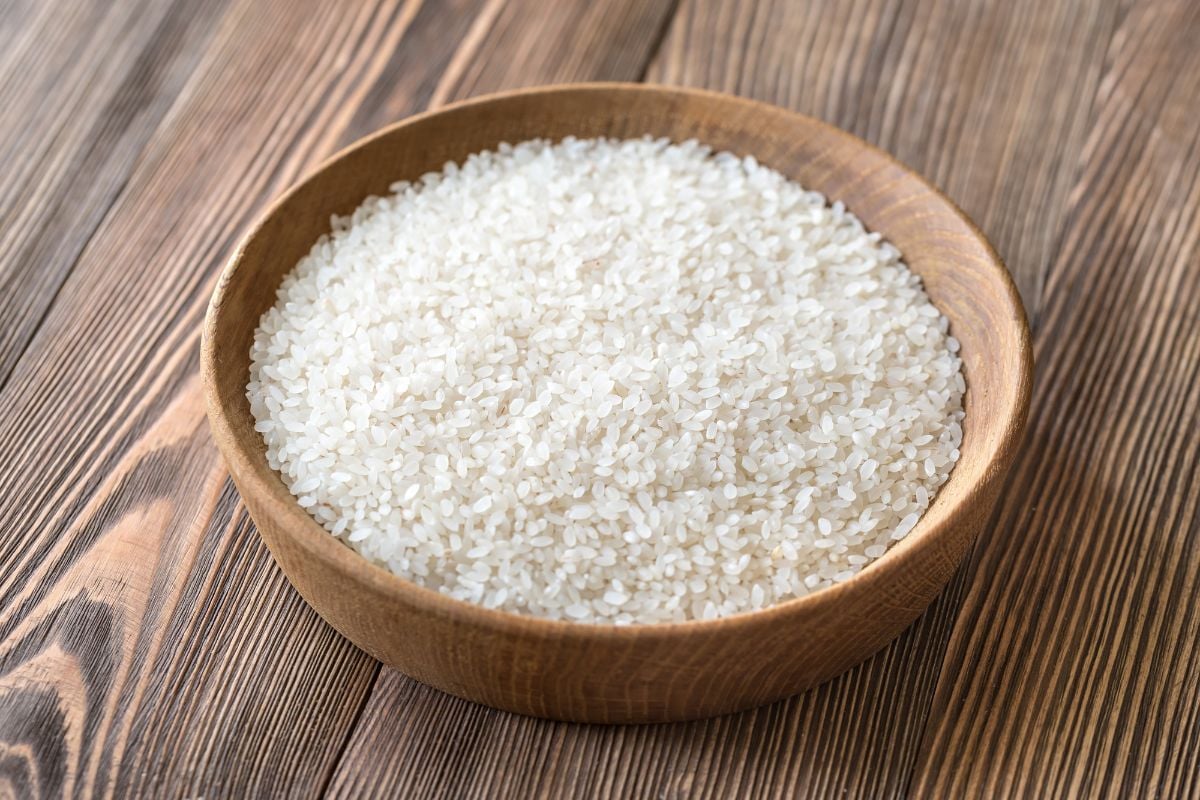
Origin and Flavor: Egyptian rice is a short grain staple in Egypt. It has a mild flavor and serves as a good base for various dishes. When cooked, Egyptian rice becomes tender and sticky.
Uses: Egyptian rice is used in a variety of traditional Egyptian dishes, including Kushari, a popular street food made with rice, lentils, and pasta topped with spicy tomato sauce and crispy onions.
Glutinous Black Rice (Black Sticky Rice)
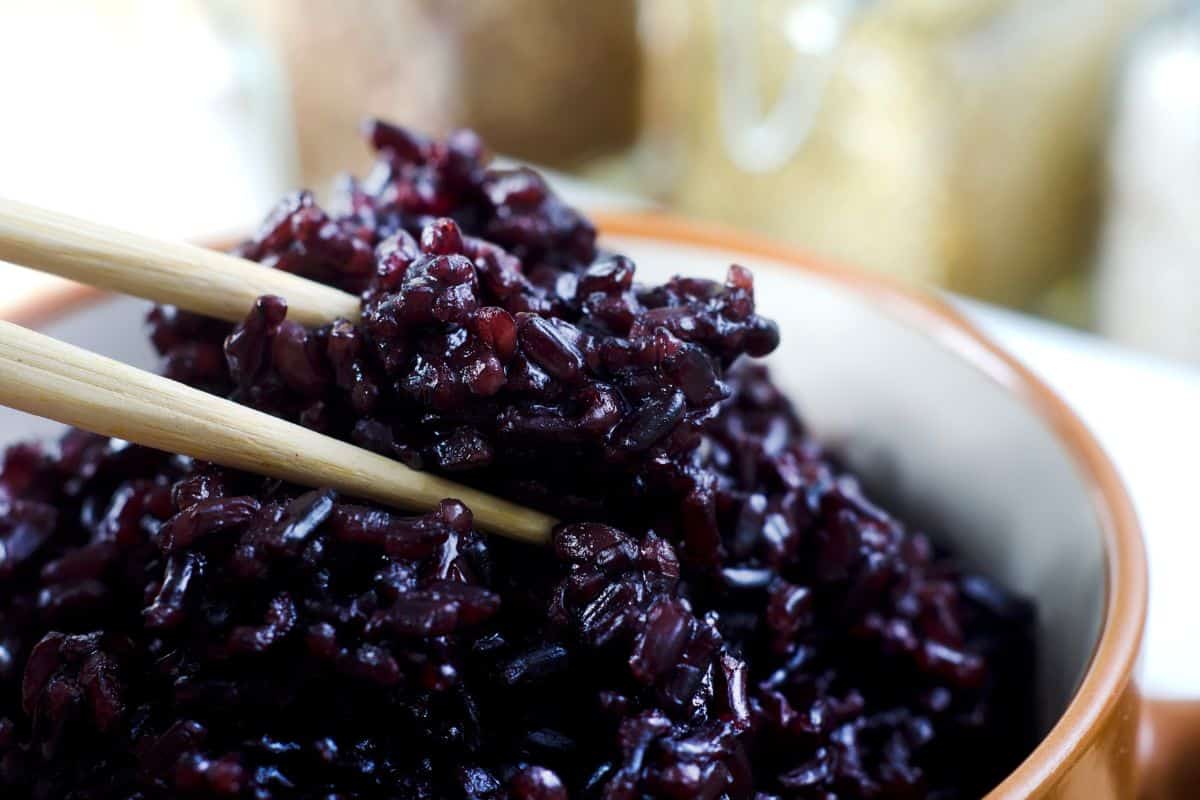
Origin and Flavor: Like other glutinous rice varieties, this rice is found in Southeast Asian countries, particularly Thailand and Vietnam. It is a short-grain rice variety with a slightly sweet flavor. When cooked, it becomes sticky and has a chewy texture.
Uses: Glutinous black rice is often used in both sweet and savory dishes in Southeast Asian cuisines. It is a key ingredient in desserts like Thai black rice pudding and is also used in savory dishes like rice dumplings and sticky rice balls.
Glutinous Brown Rice (Brown Sticky Rice)
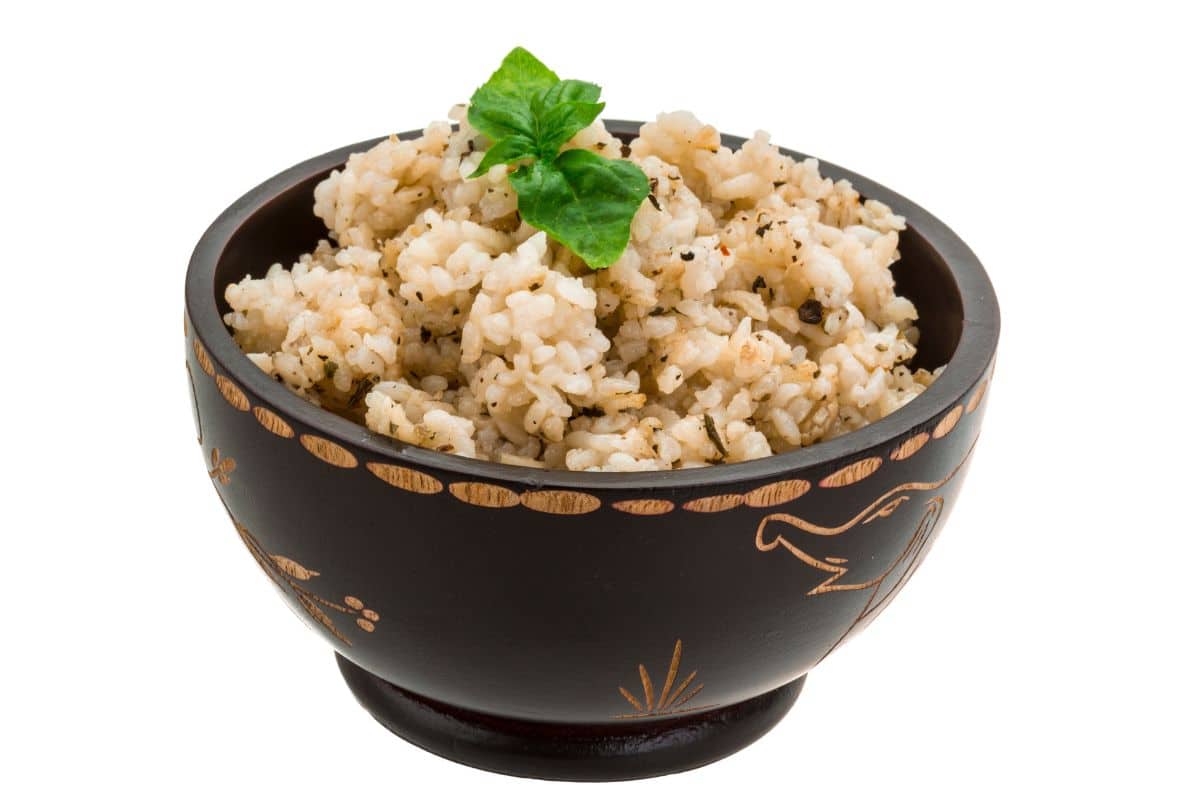
Origin and Flavor: Glutinous brown rice is similar to glutinous black rice and is commonly found in Southeast Asian countries. It too is a short-grain rice variety with a slightly earthy flavor. When cooked, it becomes sticky and has a chewy texture, similar to other glutinous rice varieties.
Uses: Glutinous brown rice is used in various sweet and savory dishes, including traditional rice cakes, steamed rice desserts, and rice-based snacks.
Green Jade Bamboo Rice
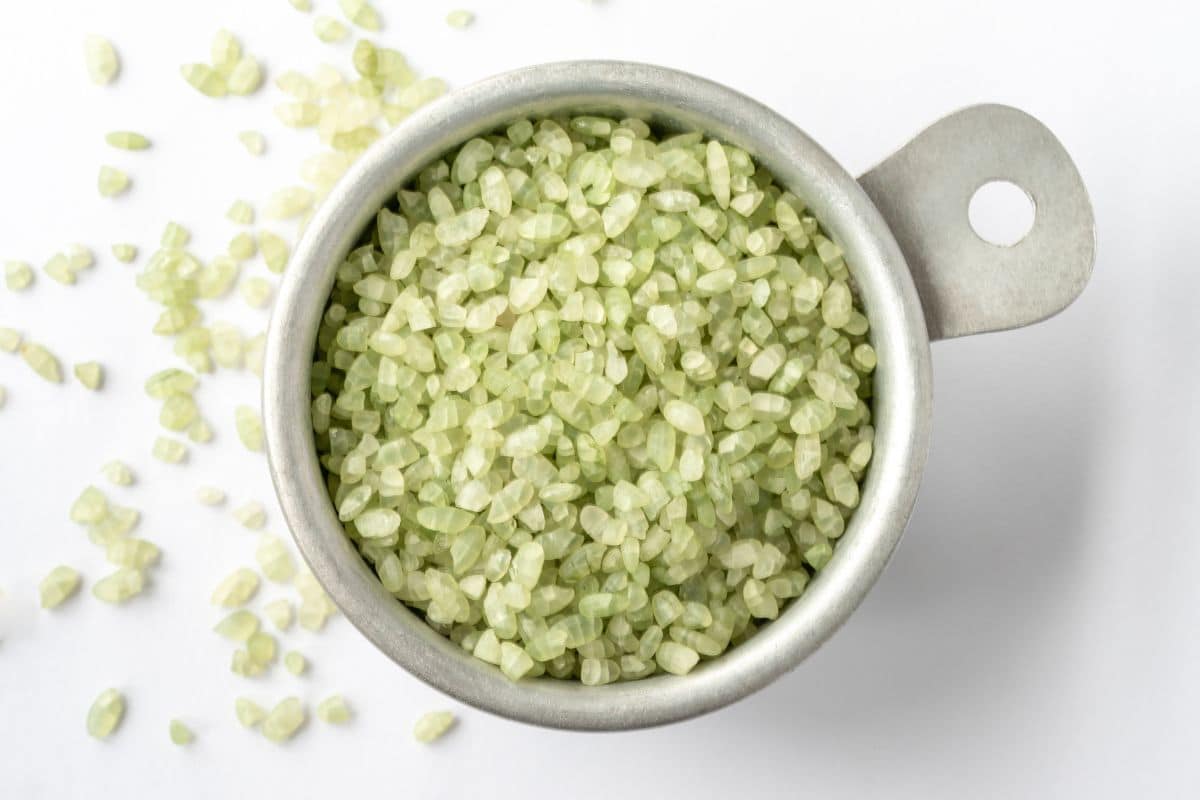
Origin and Flavor: Green jade bamboo rice is a medium-grain rice from Thailand. It is a type of glutinous rice infused with bamboo juice. As a result, it has a mild bamboo flavor. The rice is sticky and chewy after cooking, typical of glutinous rice varieties.
Uses: Green jade bamboo rice is often used in traditional Thai dishes for its unique color and flavor. It can be enjoyed on its own or used as a base for various rice-based meals. You may find this in Asian markets, or just get it on Amazon if a bamboo tasting rice sounds intriguing.
Himalayan Red Rice
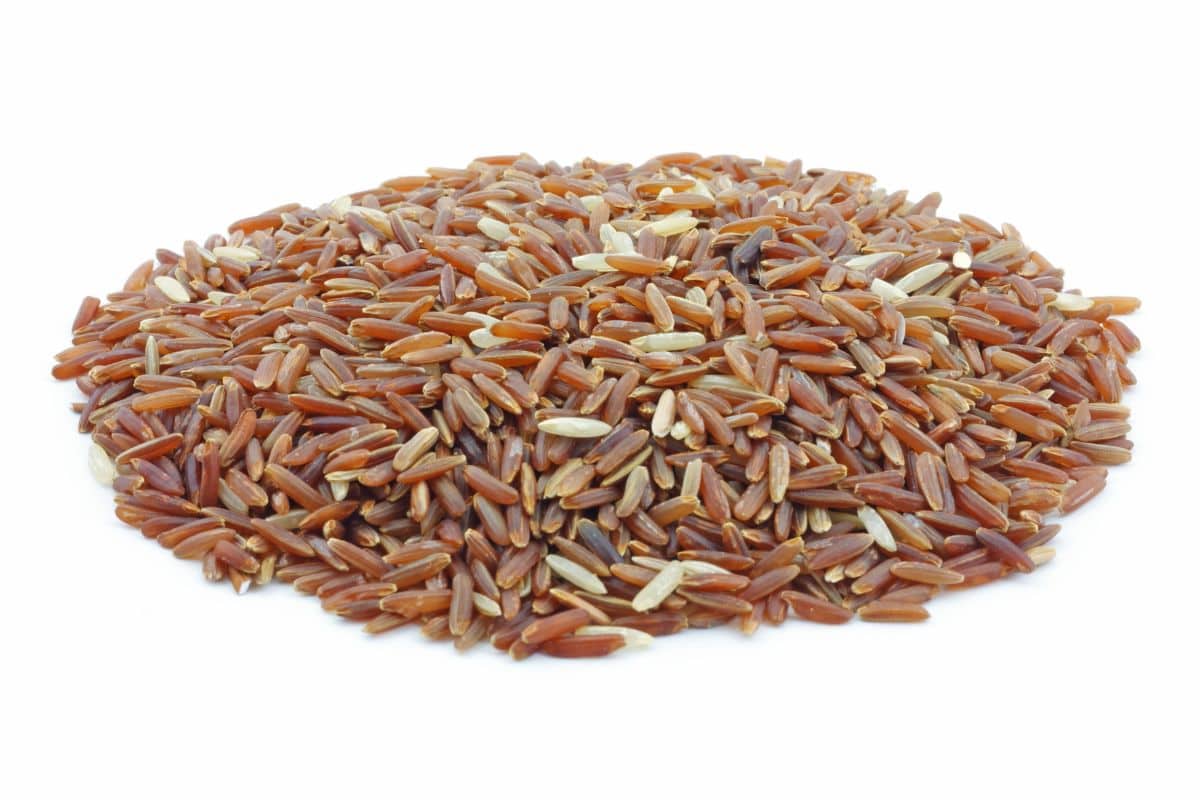
Origin and Flavor: Himalayan red rice hails from the Himalayan region, including countries like Bhutan and Nepal. It is a long-grain rice variety noted for its nutty and slightly earthy flavor. When cooked, it becomes tender and separates easily into individual grains.
Uses: Himalayan red rice is often used as a side dish, in salads, and as an accompaniment to various meat and vegetable dishes. It is also a popular choice for pilafs and rice-based salads due to its beautiful red color and nutty taste.
Indonesian Black Rice
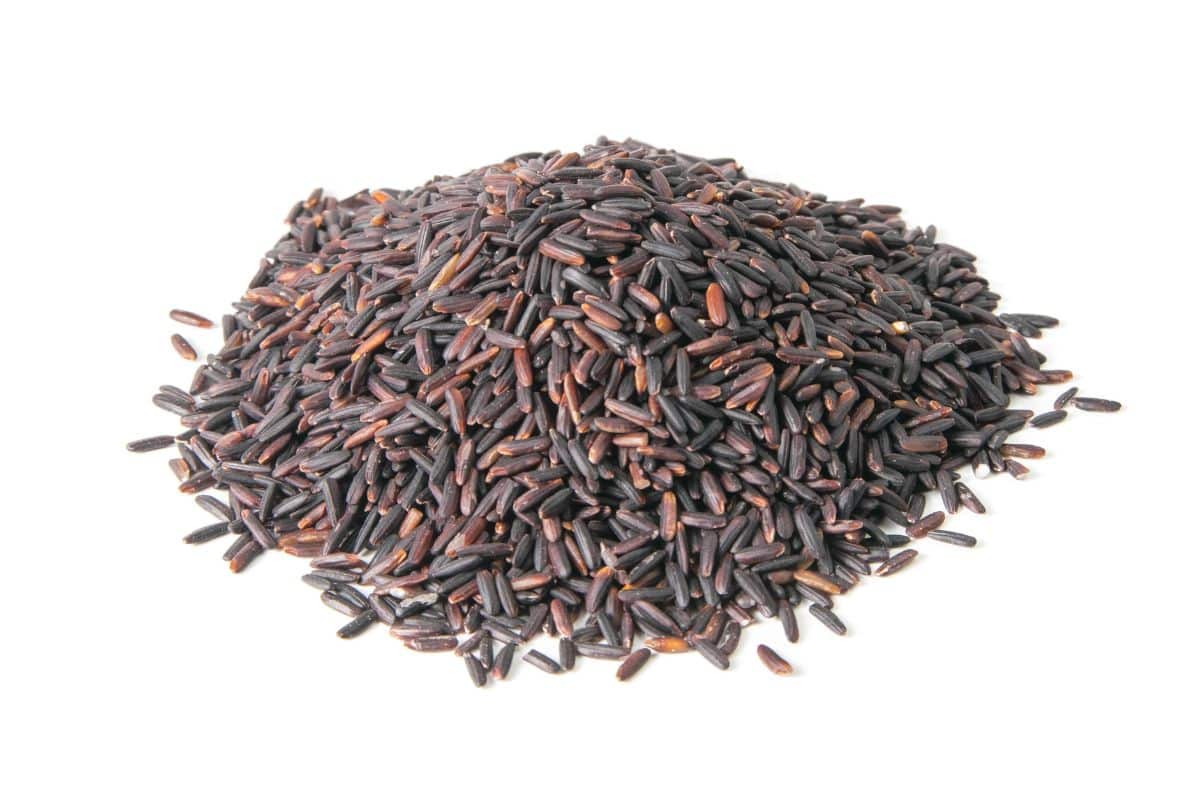
Origin and Flavor: Indonesian black rice is native to Indonesia and other Southeast Asian countries. It is a short-grain rice variety with a nutty and slightly sweet flavor. When cooked, it becomes sticky and has a chewy texture due to its high amylopectin content.
Uses: Indonesian black rice is often used in sweet dishes, such as black rice puddings, desserts, and traditional rice cakes. It is also used in savory dishes like rice dumplings and sticky rice-based snacks.
Italian Black Rice (Venere Rice)
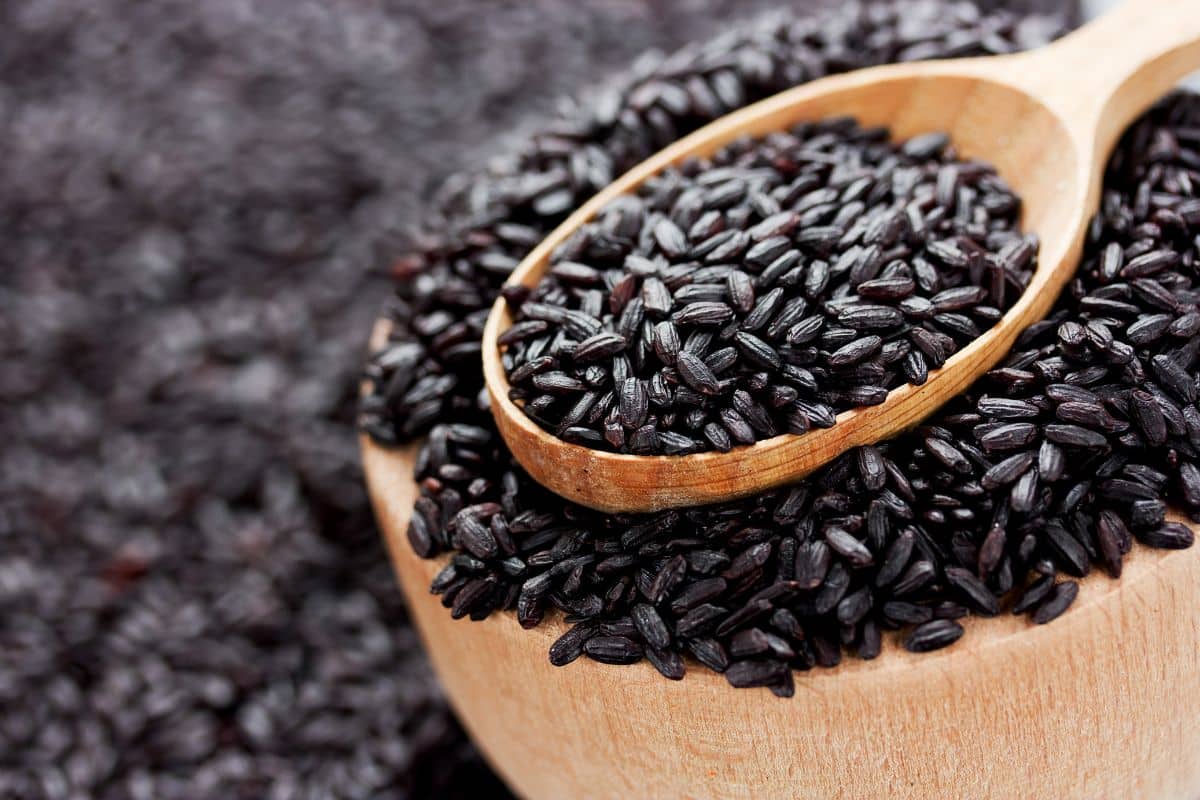
Origin and Flavor: Italian black rice, also known as Venere rice, originates from Italy. It is a medium to long-grain rice variety, and is known for its nutty and slightly floral flavor. When cooked, it becomes tender with a chewy texture, similar to other black rice varieties.
Uses: Italian black rice is used in various dishes, including salads, risottos, and meat or seafood dishes. It’s unique appearance and flavor add a touch of elegance to culinary presentations.
Jade Pearl Rice
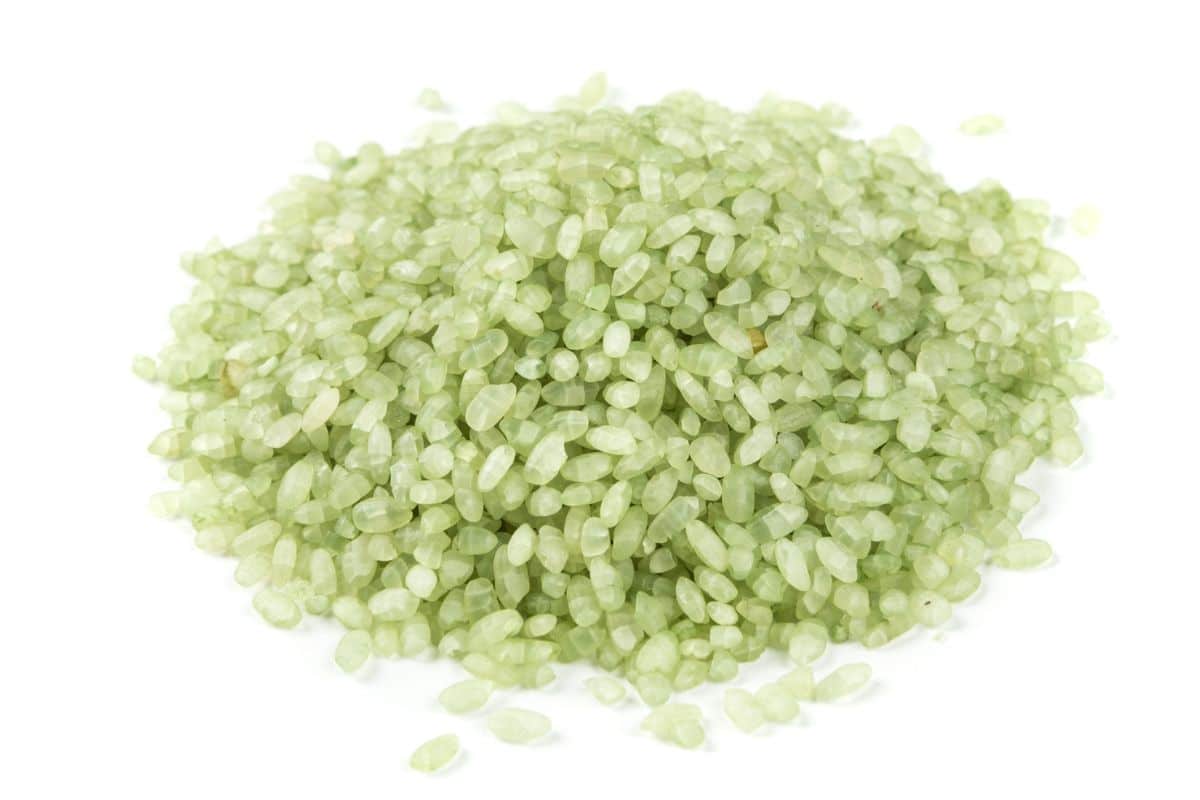
Origin and Flavor: Jade Pearl rice is a hybrid variety developed in the United States. It is a medium-grain rice variety with a slightly sweet and nutty flavor. When cooked, it becomes slightly sticky and has a tender texture.
Uses: Jade Pearl rice is a versatile rice, and can be used in a wide range of dishes. It is suitable for rice bowls, stir-fries, and as a side dish for various meat and vegetable preparations.
Jasmine Red Rice
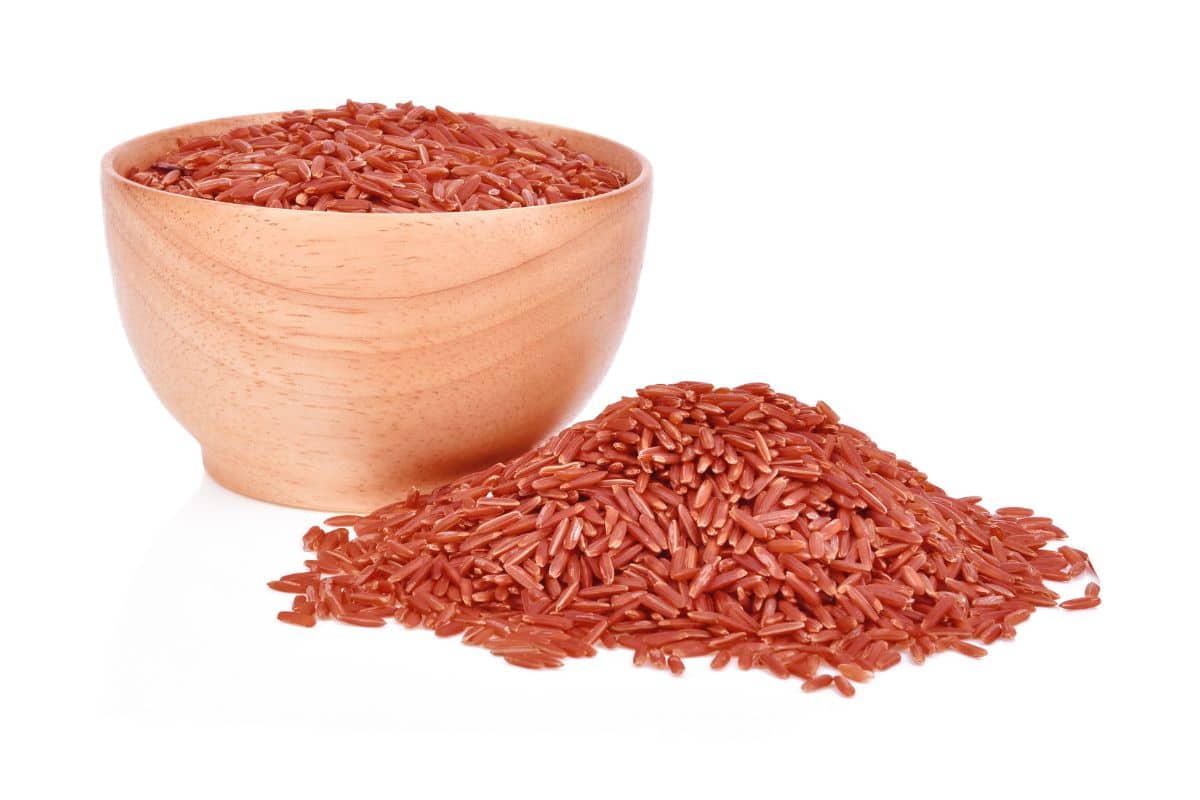
Origin: Jasmine red rice is a variety that shares similarities with traditional jasmine rice and is commonly grown in Southeast Asian countries.
Flavor: It is a long-grain rice variety, and has a nutty and floral aroma, similar to traditional jasmine rice. When cooked, it becomes slightly sticky with a fluffy and tender texture. You can also find jasmine rice in black and purple.
Uses: Jasmine red rice is often served as a side dish and pairs well with a variety of meats, vegetables, and sauces.
Jasmine Rice
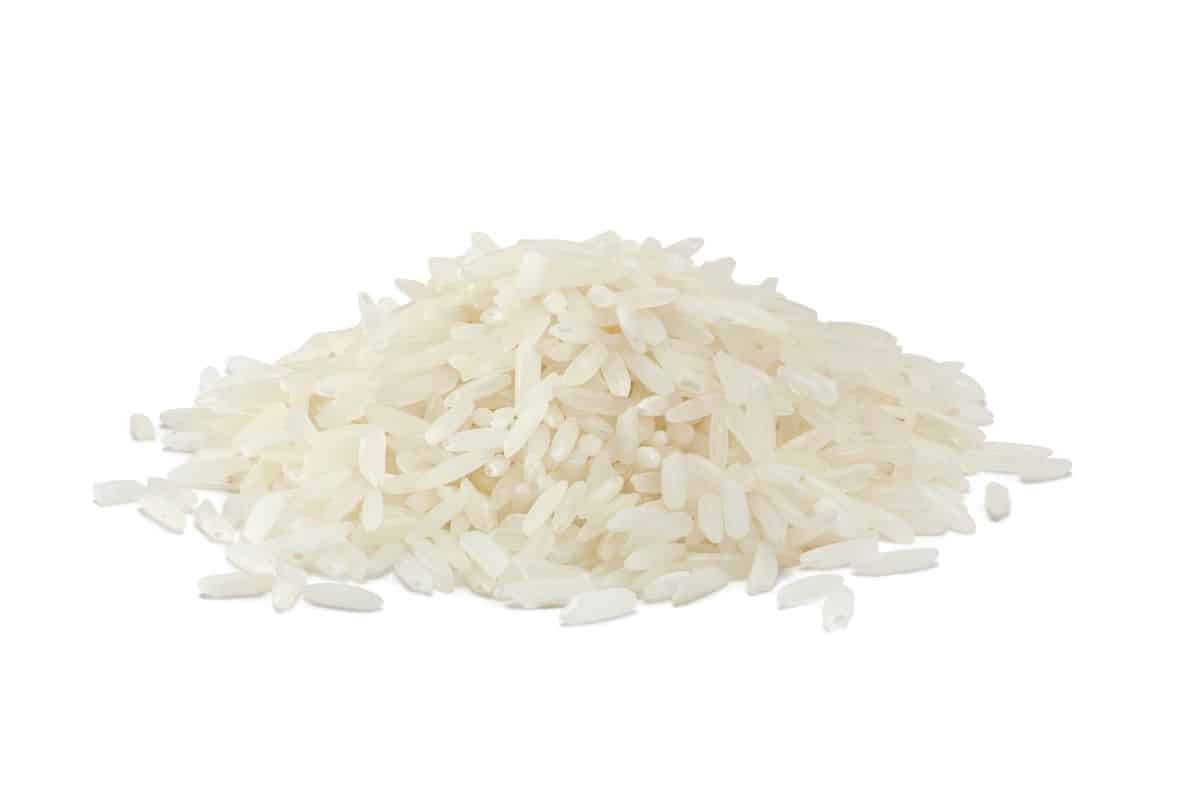
Origin and Flavor: Jasmine rice is originally from Thailand, but is now widely grown in various Southeast Asian countries. It is a long-grain rice variety known for its delicate floral aroma and a subtle nutty flavor. When cooked, it becomes soft, fluffy, and slightly sticky.
Uses: Jasmine rice is a popular choice for Asian cuisines, especially Thai and Vietnamese dishes. It is commonly served with stir-fries, curries, and grilled meats. Here’s how to cook jasmine rice!
Kokuho Rose Rice
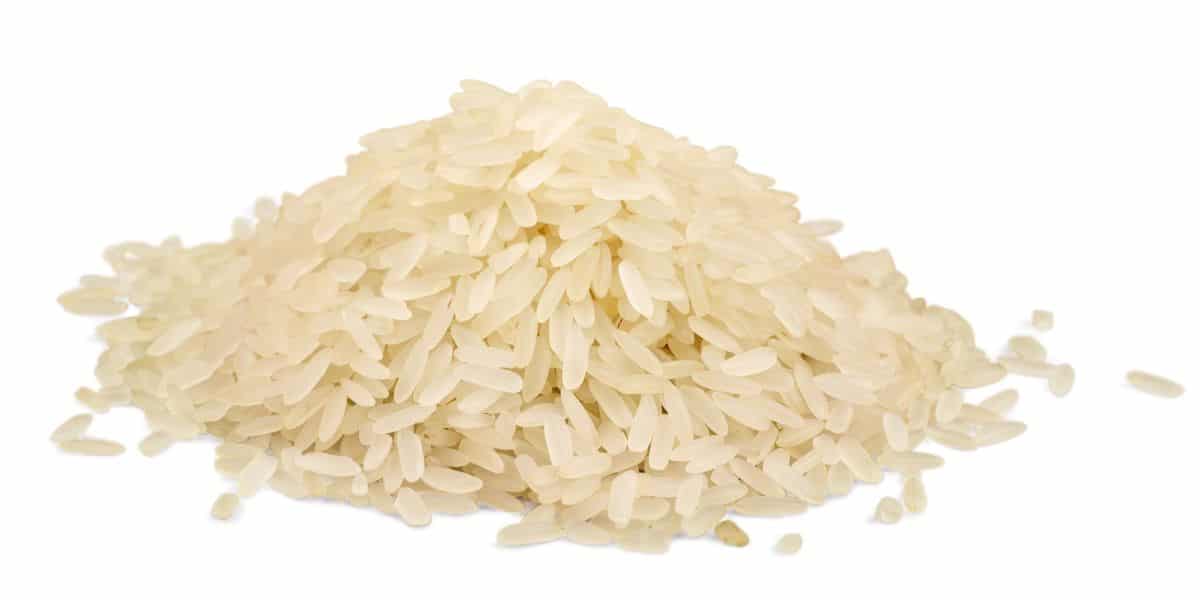
Origin and Flavor: Kokuho rose rice is a variety of medium-grain rice developed in California. It has a slightly sweet flavor, and the cooked grains are tender and slightly sticky.
Uses: Kokuho rose rice is versatile and can be used in a wide range of dishes. It’s often used in Asian cuisines, including sushi, rice bowls, and side dishes.
Koshihikari Rice
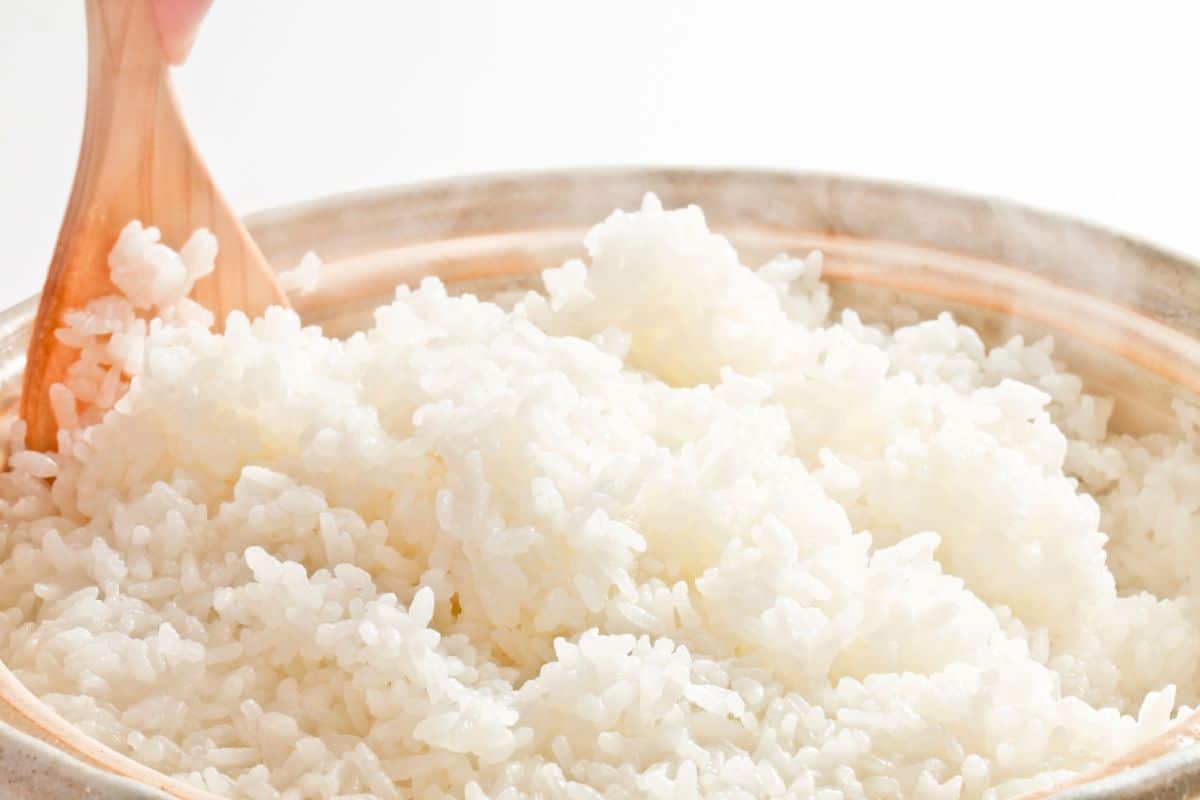
Origin and Flavor: Koshihikari rice is a premium Japanese rice variety native to the Island of Japan. It is a short-grain rice variety known for its delicate and sweet flavor with a slight umami taste. When cooked, it becomes sticky and has a soft, slightly chewy texture.
Uses: Koshihikari rice is highly prized in Japanese cuisine and is commonly used to make sushi, onigiri (rice balls), and other traditional Japanese dishes. It is also enjoyed as plain steamed rice to accompany various meals.
Mochi Rice (Sweet Rice or Glutinous Rice)
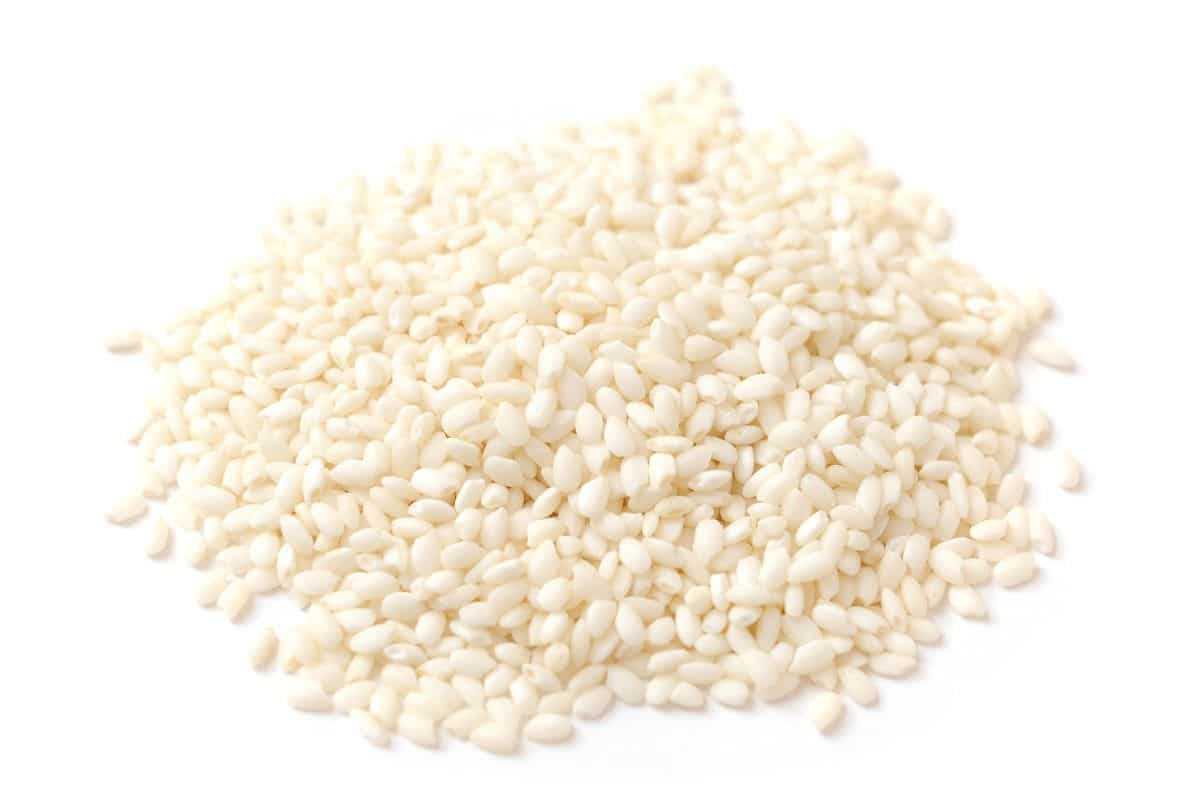
Origin and Flavor: Mochi rice is cultivated in various Asian countries, including Japan, Korea, and Thailand. It is a short-grain rice variety with a mild and slightly sweet flavor. When cooked, it becomes very sticky and chewy, owing to its high amylopectin content.
Uses: Mochi rice is primarily used to make Japanese mochi, a sticky rice cake. It is also used in various Asian desserts and dishes where a sticky texture is desired.
Parboiled Rice
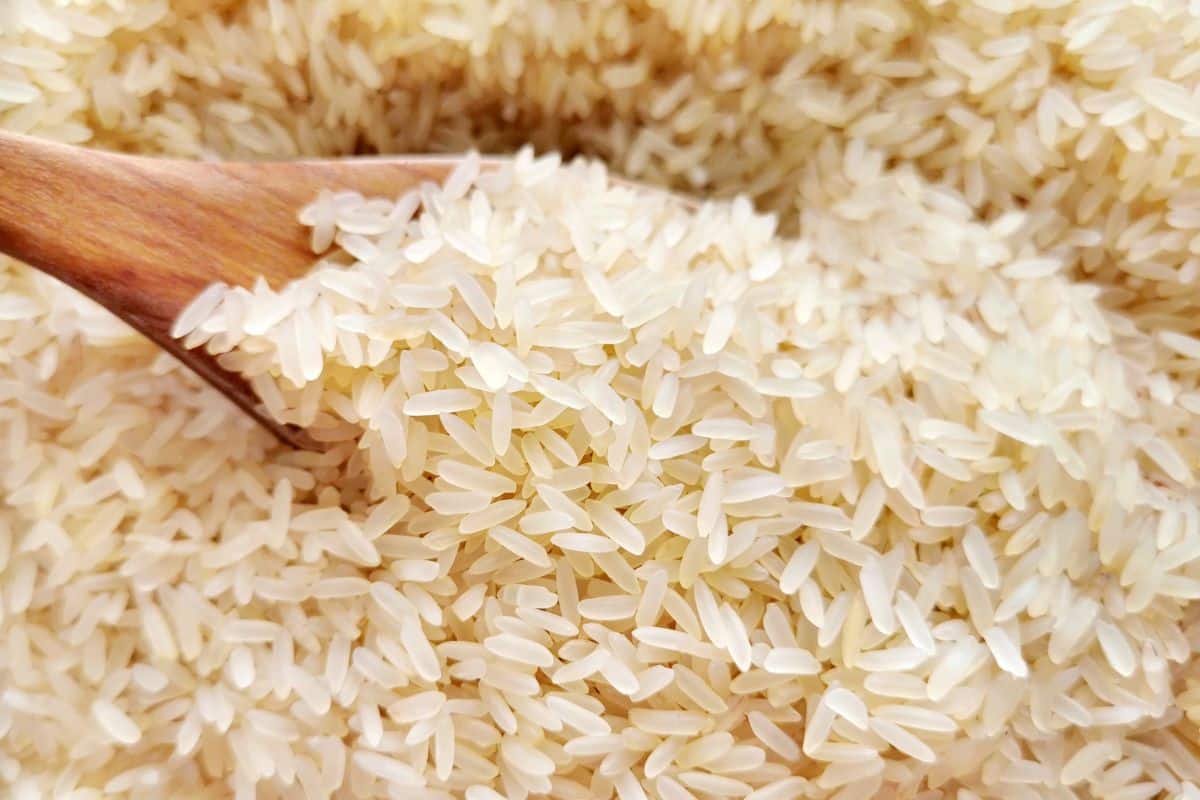
Origin: Parboiled rice is processed rice rather than a specific rice variety, and it is produced in several rice-growing regions globally. It can be found in long, medium, or short-grain varieties, depending on the original rice type.
Cooking Technique and Flavor: Parboiling involves partially boiling the rice in its inedible outer husk. This improves the texture of the rice which when cooked, becomes fluffy and separate, similar to regular long-grain rice, while retaining some firmness.
Uses: Parboiled rice is often used as a substitute for regular white rice in dishes like pilafs, casseroles, and side dishes. It is also popular in regions where it is the preferred rice for daily consumption due to its improved nutritional value.
Ponni Rice
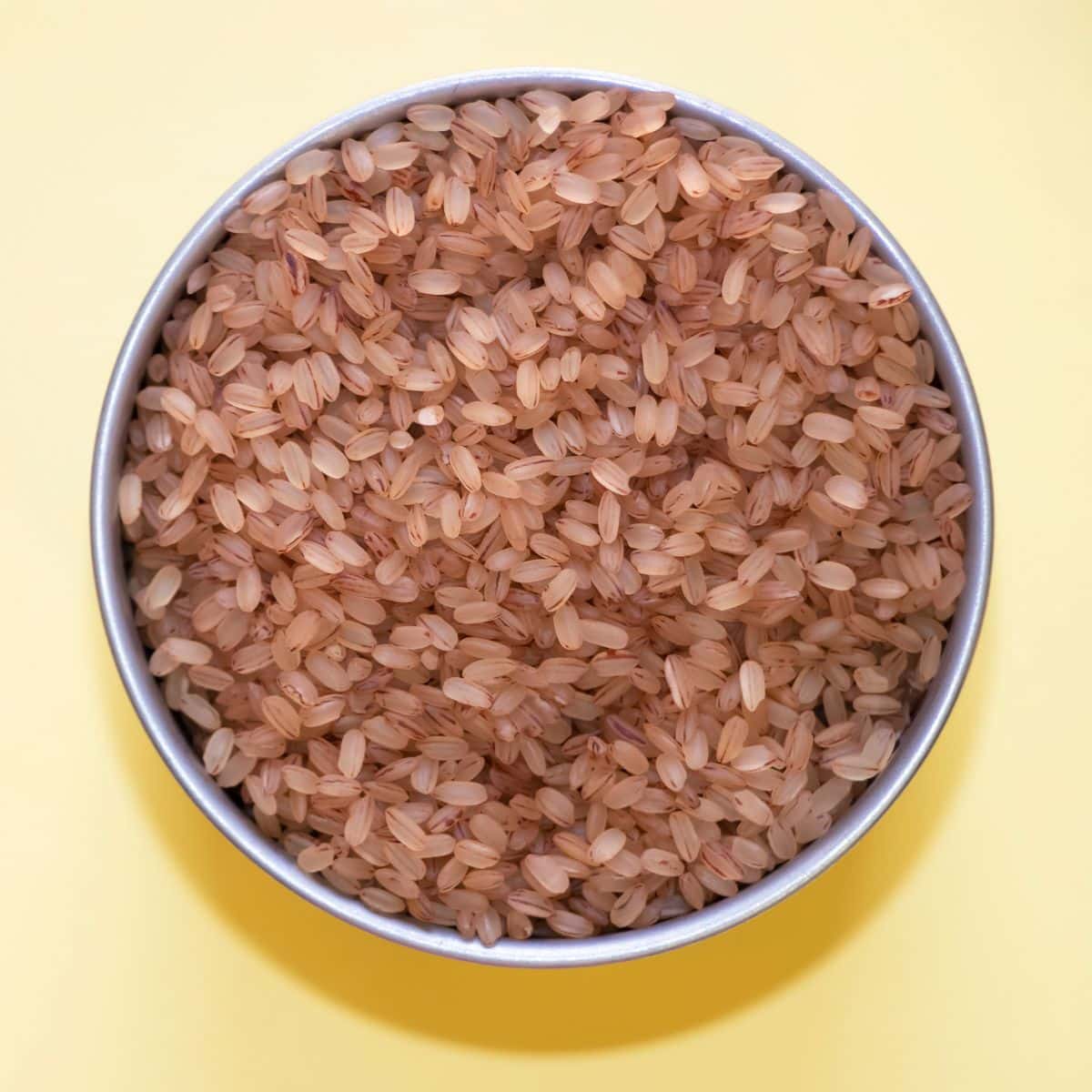
Origin: Ponni rice is a popular rice variety originally from the southern regions of India, particularly Tamil Nadu. It is a medium-grain rice variety, and has a subtle and delicate flavor. When cooked, it becomes fluffy and slightly sticky, with each grain maintaining its structure.
Uses: Ponni rice is widely consumed in South Indian cuisine and is used to prepare various rice-based dishes like biryanis, pulaos, and rice-based accompaniments to curries and stews.
Purple Sticky Rice
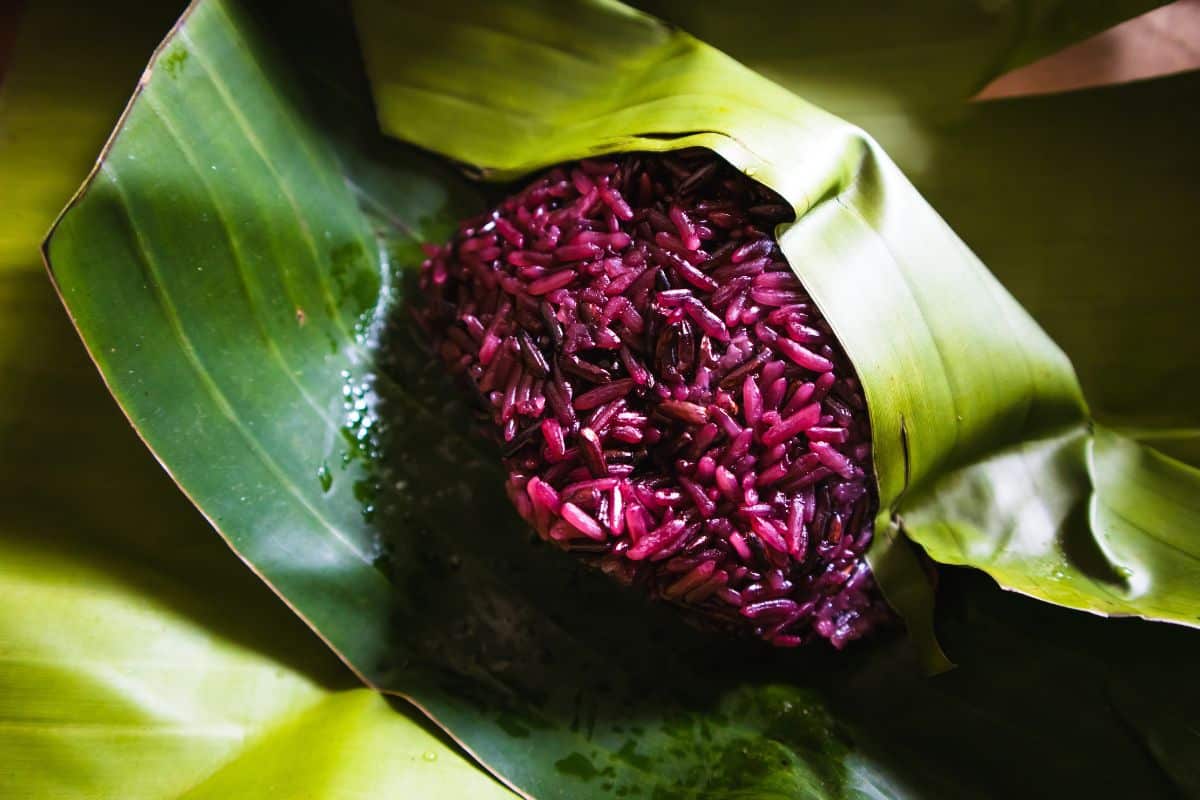
Origin and Flavor: Purple sticky rice, also known as black glutinous rice, is a short to medium-grain rice commonly grown in Southeast Asian countries like Thailand, Laos, and Cambodia. It is a variation of jasmine rice with a slightly earthy flavor, along with a subtle sweetness. When cooked, purple sticky rice becomes soft and sticky, with a chewy texture.
Uses: It’s often used in both sweet and savory dishes. In Thai cuisine, it’s commonly used to make desserts like “khao niew dam” (black sticky rice with coconut milk and mango) and “khao tom mat” (sweet sticky rice wrapped in banana leaves).
The purple color comes from the presence of anthocyanins (antioxidants), giving this rice a decided health boost over other varieties.
Red Rice
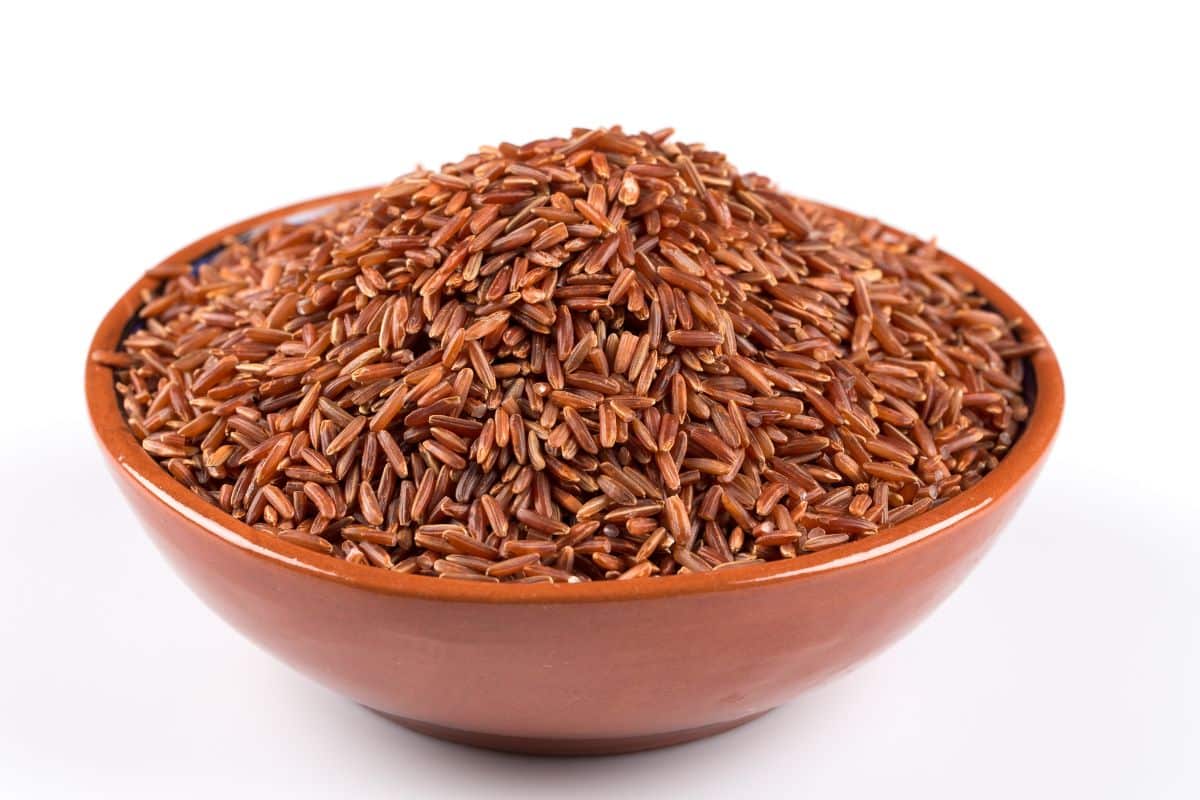
Origin: Red rice has been cultivated for centuries in various parts of the world, but primarily India, Bhutan, and Thailand.
Flavor: Red rice is characterized by its distinctive red or burgundy color. It is primarily known for its nutritional value and robust slightly earthy taste. Its taste is influenced heavily by the bran layer which is left intact and gives red rice a decided nutritional advantage over other rice varieties. Generally, red rice has a firmer and chewier texture compared to white rice.
Uses: Red rice is great in grain bowls, pilaf, curry, rice salad, rice pudding, stuffed vegetables, and a whole lot more.
Nutritional Value: Red rice is often considered a healthier option than refined white rice due to its higher nutritional content. The outer bran layers are rich in fiber, vitamins, and minerals, such as B vitamins, iron, and zinc. Additionally, red rice contains antioxidants, particularly anthocyanins, which contribute to its red color and offer potential health benefits.
Red Cargo Rice
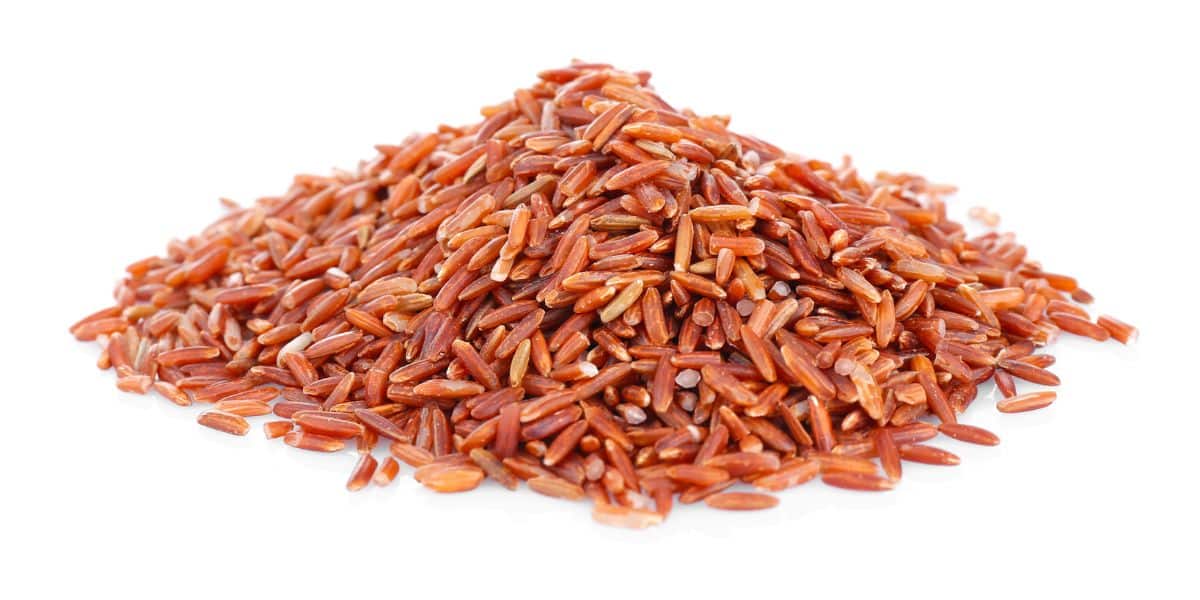
Origin and Flavor: Red cargo rice is commonly grown in Thailand and other Southeast Asian countries. It is a long-grain rice variety with a nutty and earthy flavor similar to brown rice. When cooked, it becomes fluffy and slightly sticky, with a firm texture.
Uses: Red cargo rice is often used as a side dish for meats, seafood, and vegetables. It can also be used in salads and rice-based dishes.
Riceberry Rice
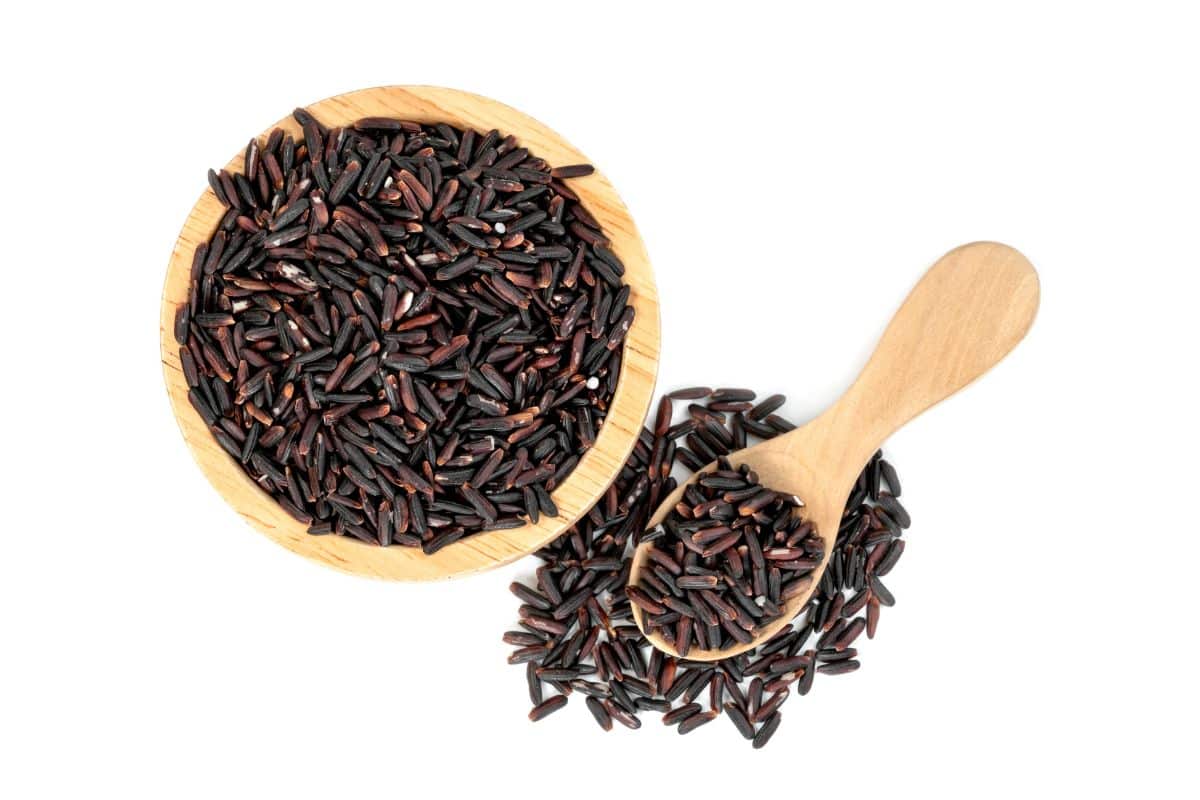
Origin and Flavor: Riceberry rice is a long-grain hybrid variety developed in Thailand by crossbreeding various types of rice. It has a nutty flavor with a hint of floral notes. After cooking, riceberry rice retains a firm texture with a slight chewiness.
Uses: Due to its appealing purple color, nutritional benefits, and pleasant taste, riceberry rice is commonly used in various dishes, including salads, stir-fries, and as a side dish.
Rosanero Rice
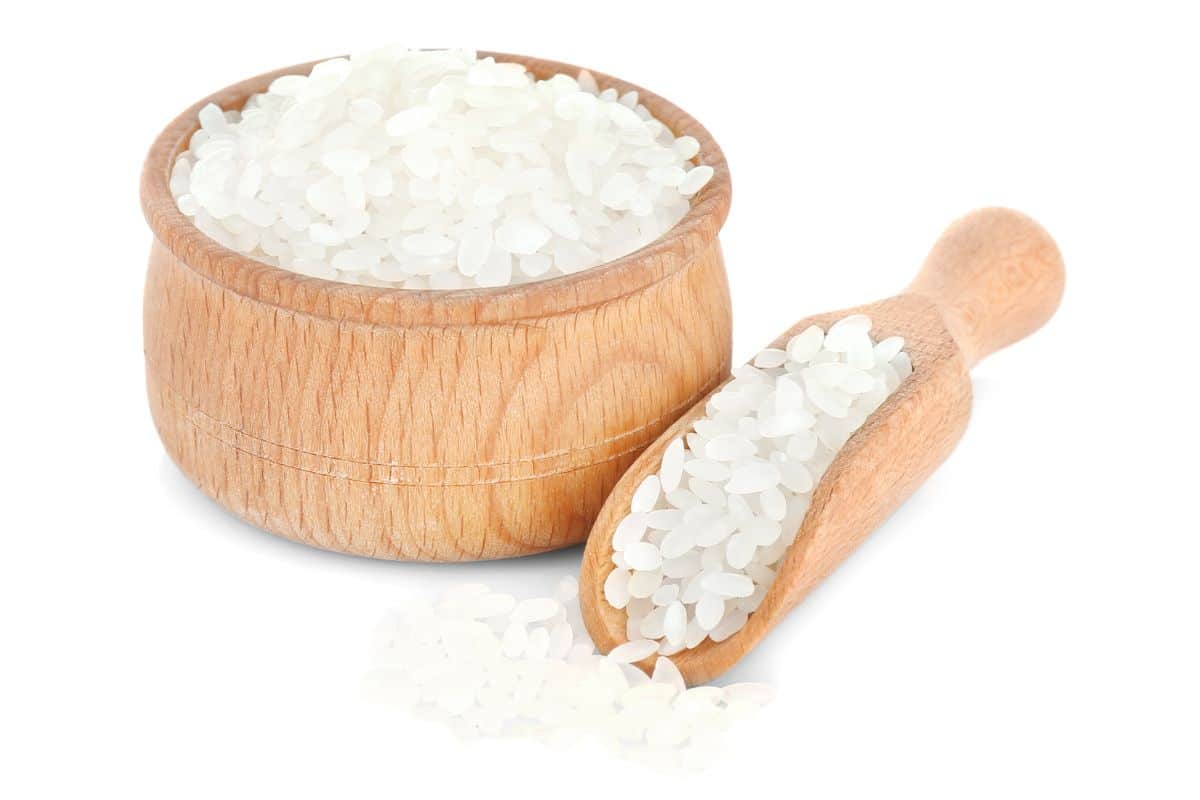
Origin and Flavor: Rosanero rice is a premium short-grain Italian rice variety. It has a distinctive flavor that is hard to describe other than the usual “slightly nutty” label we have overused. When cooked, it becomes creamy and sticky due to its high starch content.
Uses: Rosanero rice is often used in traditional Italian dishes like risottos and rice-based salads. Its creamy texture and ability to absorb flavors make it an excellent choice for rich and flavorful dishes.
Saudee Rice
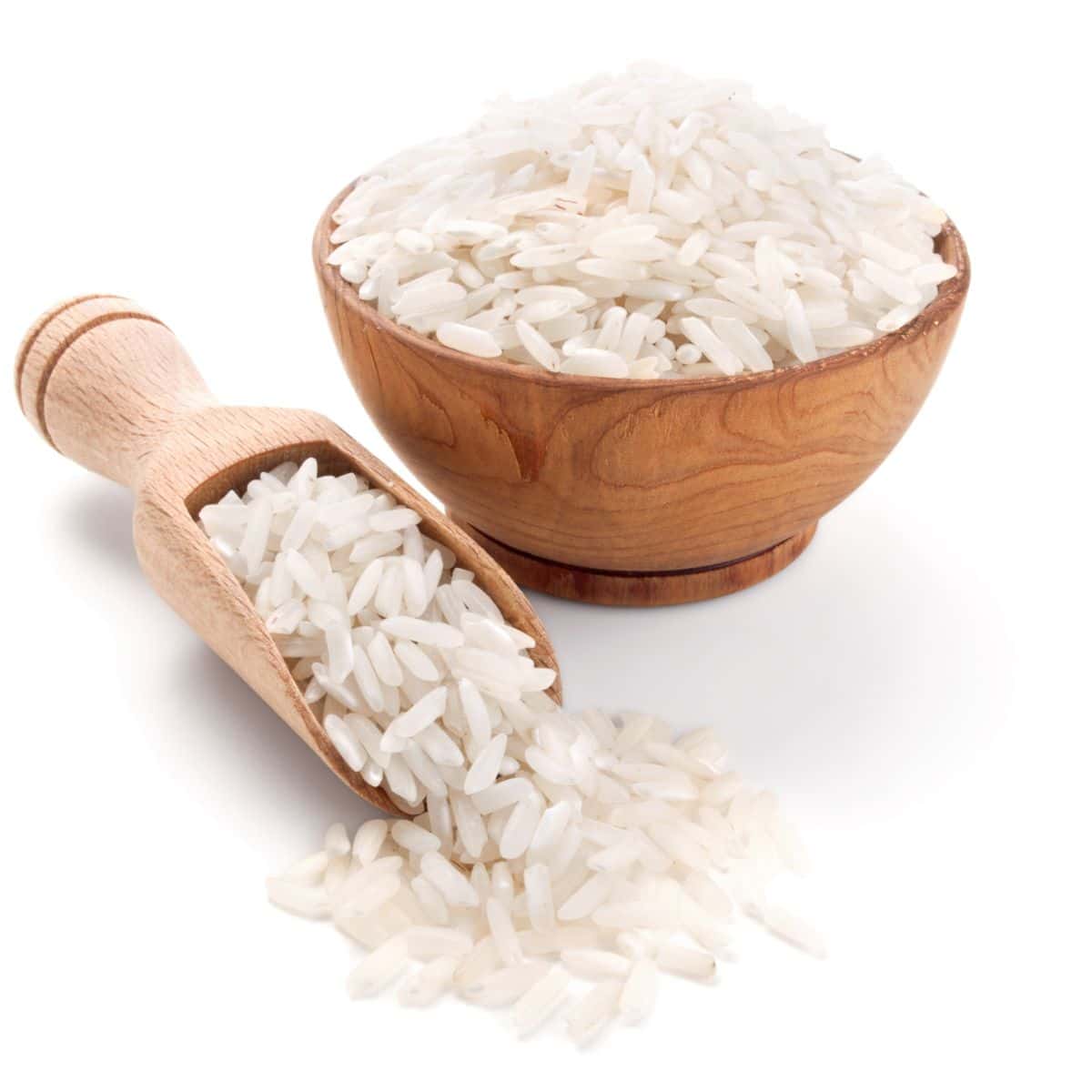
Origin: Saudee rice is a popular rice variety from Thailand. It is a long-grain rice with a mild and neutral flavor. When cooked, it becomes fluffy and separate, with individual grains maintaining their shape.
Flavor: Saudee rice is commonly used as a staple in Thai cuisine, served with various curries, stir-fries, and other dishes. It is also used in rice-based desserts and as a side dish for meats and vegetables.
Sinandomeng Rice
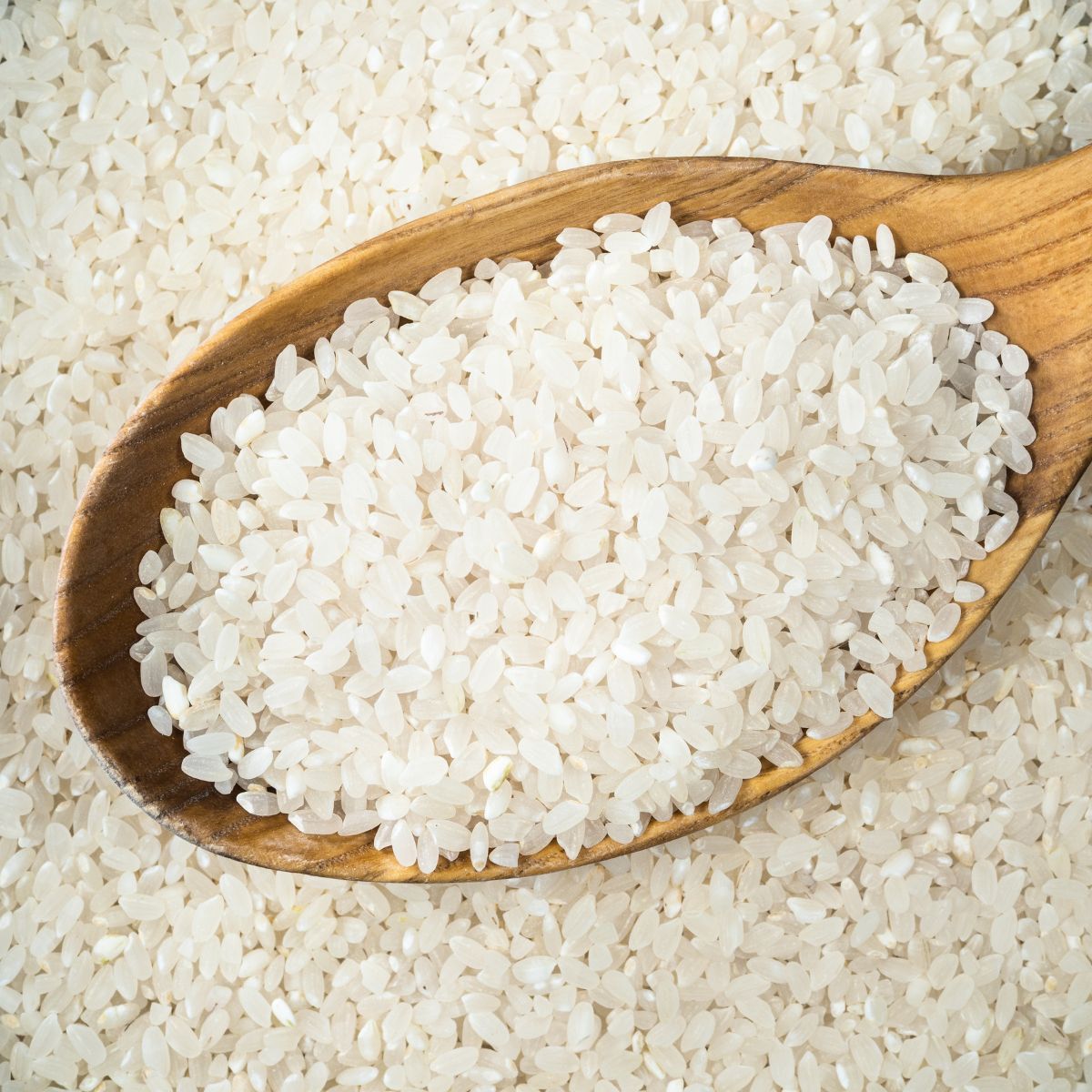
Origin and Flavor: Sinandomeng rice is a variety of rice from the Philippines. It is a medium-grain rice with a subtle and slightly nutty flavor. When cooked, it becomes fluffy and slightly sticky.
Uses: Sinandomeng rice is widely used in Filipino cuisine and is a common choice for everyday meals and special occasions there. It is commonly used in steamed rice, fried rice, and rice porridge.
Sticky Rice
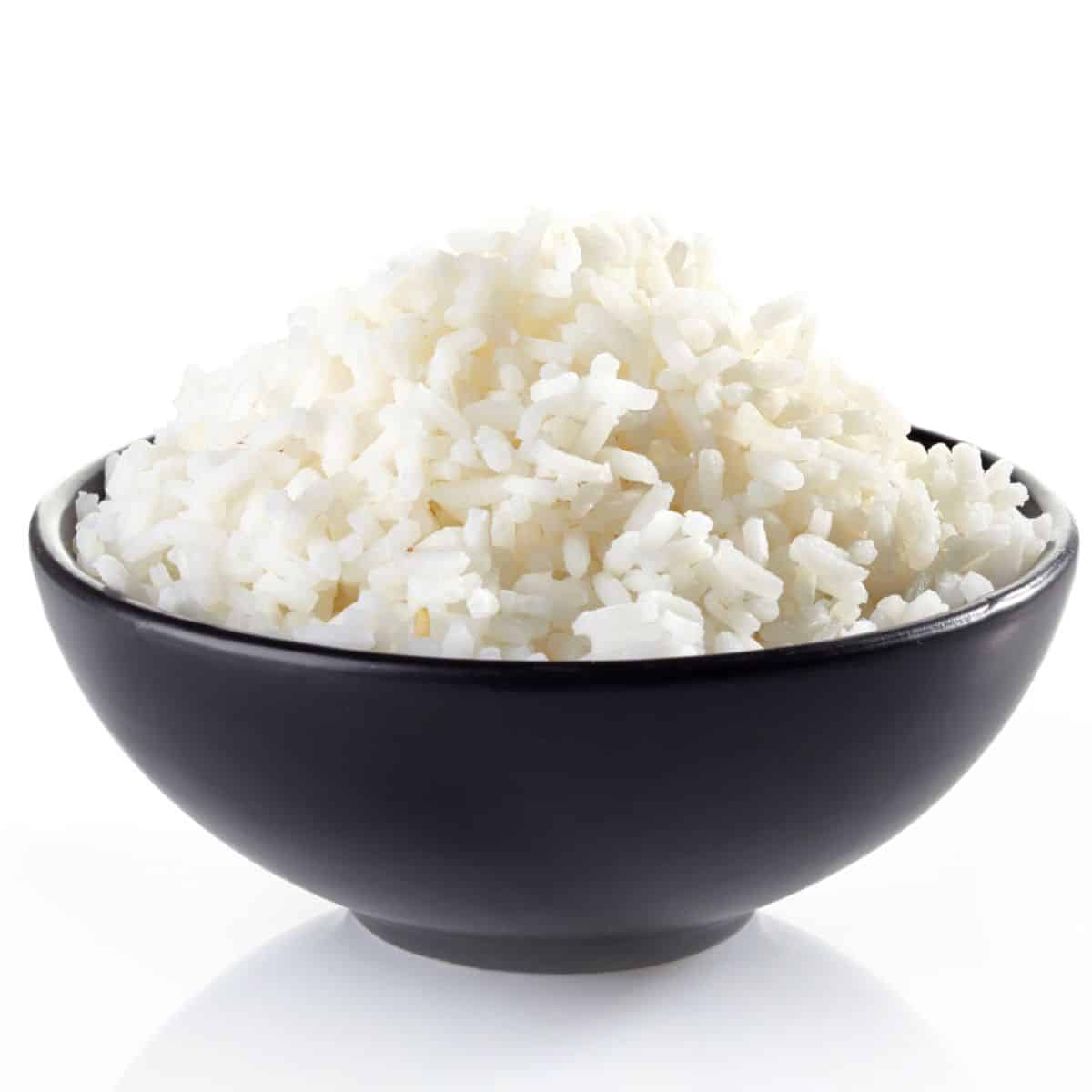
Origin and Texture: Sticky rice is also known as glutinous rice or sweet rice. It is a long grain white rice with a low amylose starch content. This gives it an extremely sticky texture when steamed.
Flavor and Uses: It has a mild taste, and is grown mainly in Southeast and East Asia and is used in many savory and sweet Asian dishes like dumplings, rice balls, and desserts.
Sushi Rice
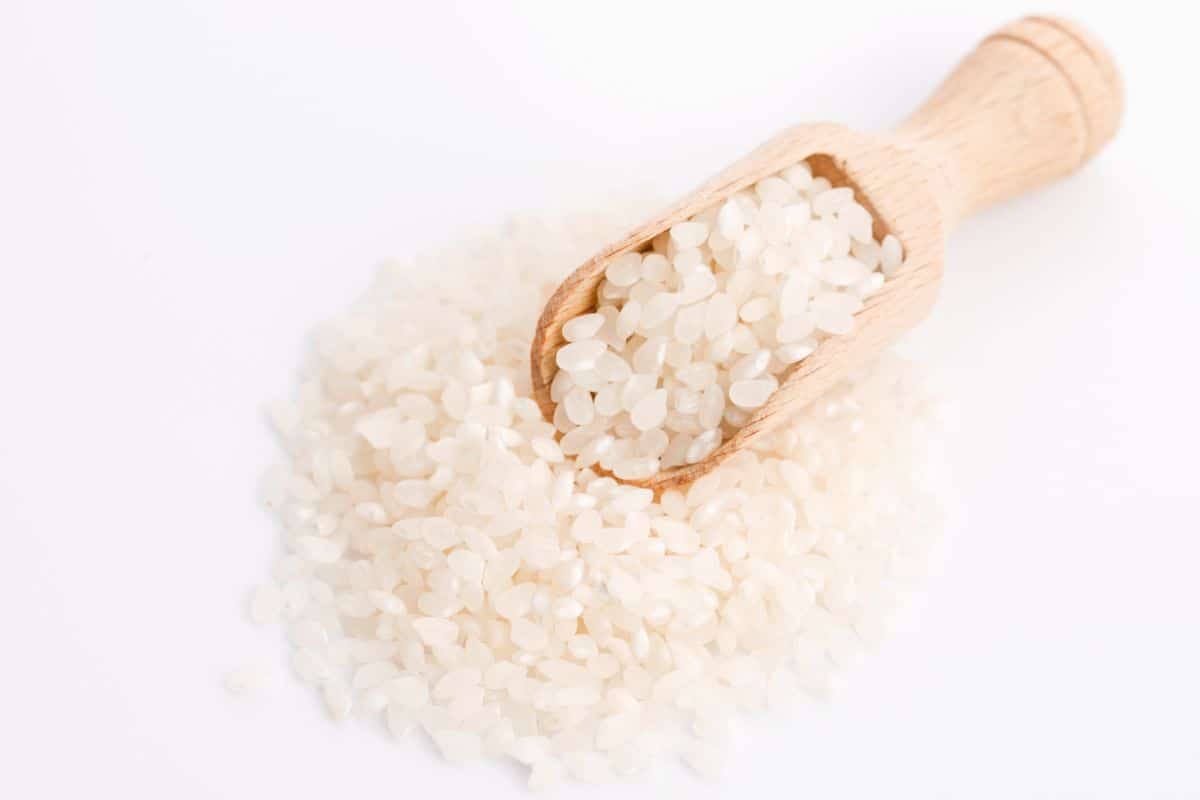
Origin and Flavor: Sushi rice, as the name suggests, is traditionally used in making sushi and originates from Japan. It is a short-grain rice variety seasoned with rice vinegar, sugar, and salt, giving it a sweet and slightly tangy flavor. When cooked and seasoned, it becomes sticky and has a soft, chewy texture due to high starch content.
Uses: Sushi rice is the primary rice used to make sushi rolls, nigiri sushi, and other sushi dishes. It is also used in rice balls (onigiri) and rice-based desserts.
Texmati Rice
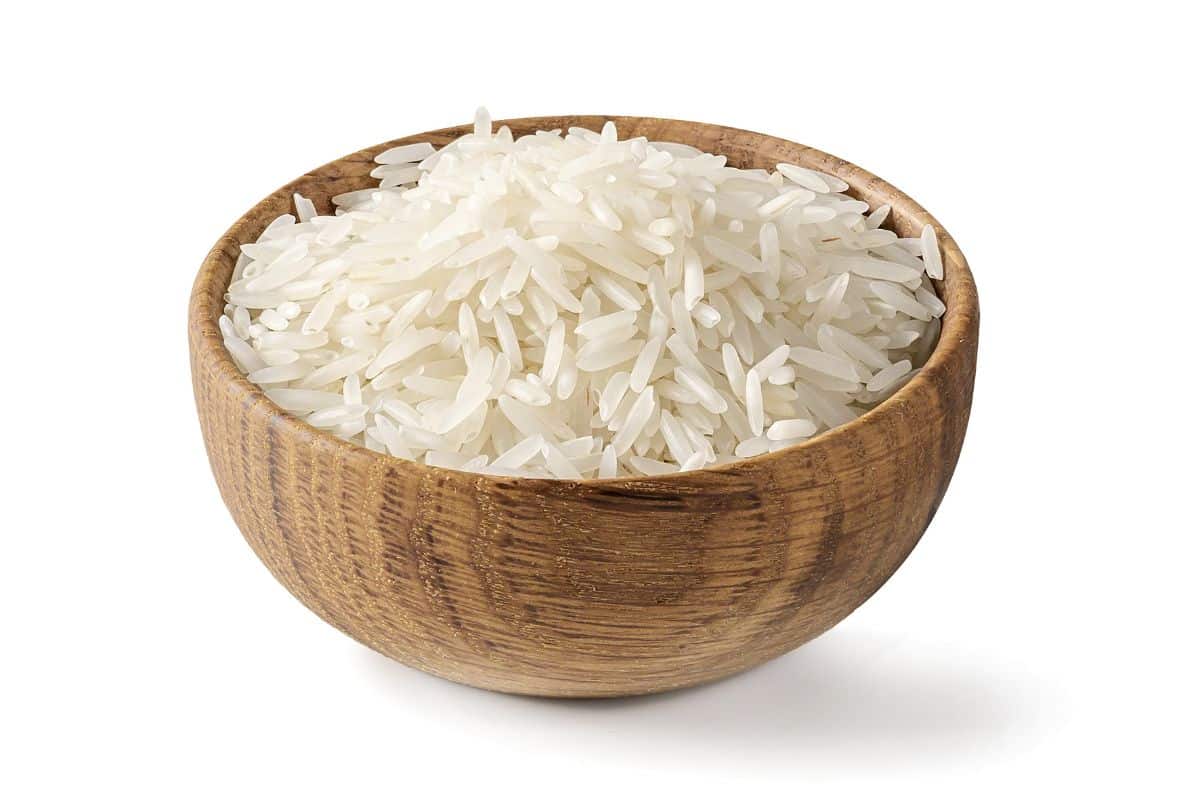
Origin and Flavor: Texmati rice is a unique hybrid rice variety developed in the United States. It is a long-grain rice variety with a slightly buttery flavor. When cooked, it becomes fluffy and separate, with each grain retaining it’s shape.
Uses: Texmati rice is commonly used as a versatile rice and can be served with a wide range of dishes. It is ideal for pilafs, salads, and as a side dish for various meat and vegetable preparations.
Valencia Rice (Arroz de Valencia)
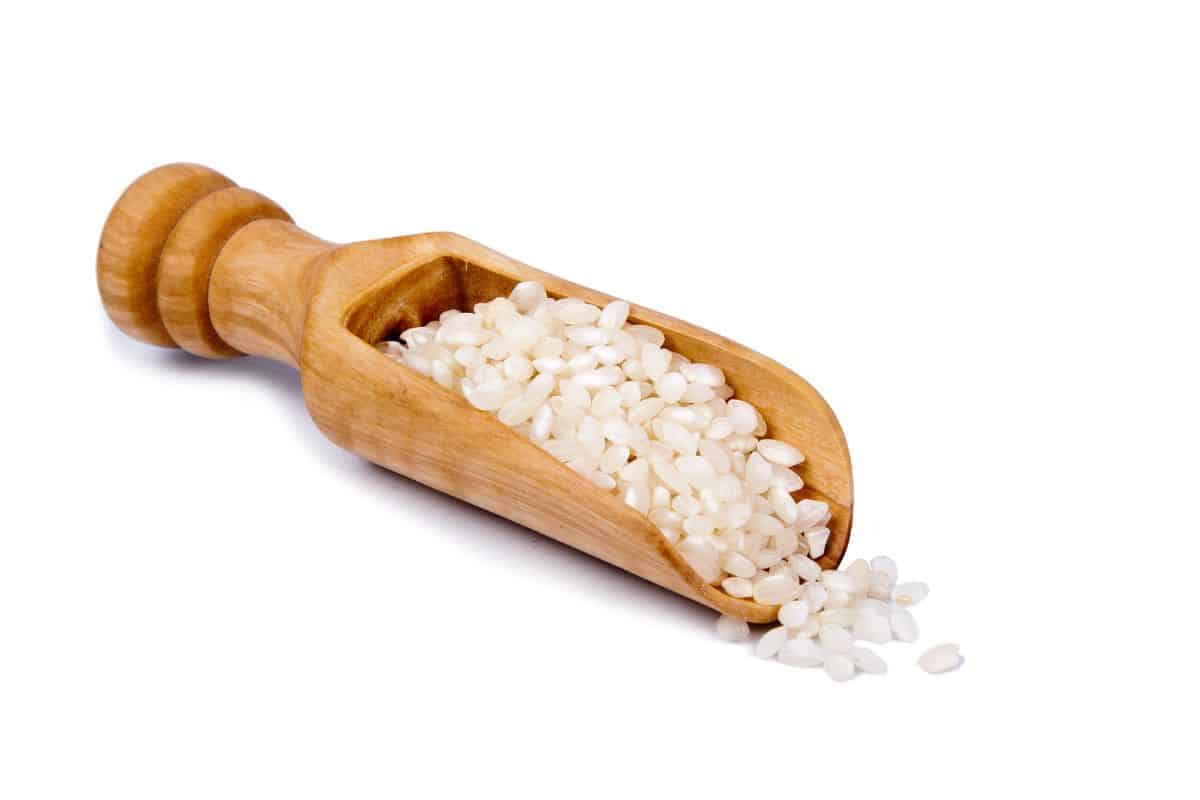
Origin and Flavor: Valencia rice is a traditional Spanish rice variety and is commonly grown in the Valencia region of Spain. It is a medium-grain rice variety known for absorbing the flavors of the dishes it is used in. When cooked, it becomes tender and slightly sticky, while maintaining its firmness and separate grain structure.
Uses: Valencia rice is famously used in the traditional Spanish dish, paella. Its ability to absorb liquids and flavors makes it ideal for one-pot rice dishes like paella, where it combines with various meats, seafood, and vegetables to create a rich and flavorful meal. It is also a good rice for stuffing peppers and croquettes.
Wehani Rice
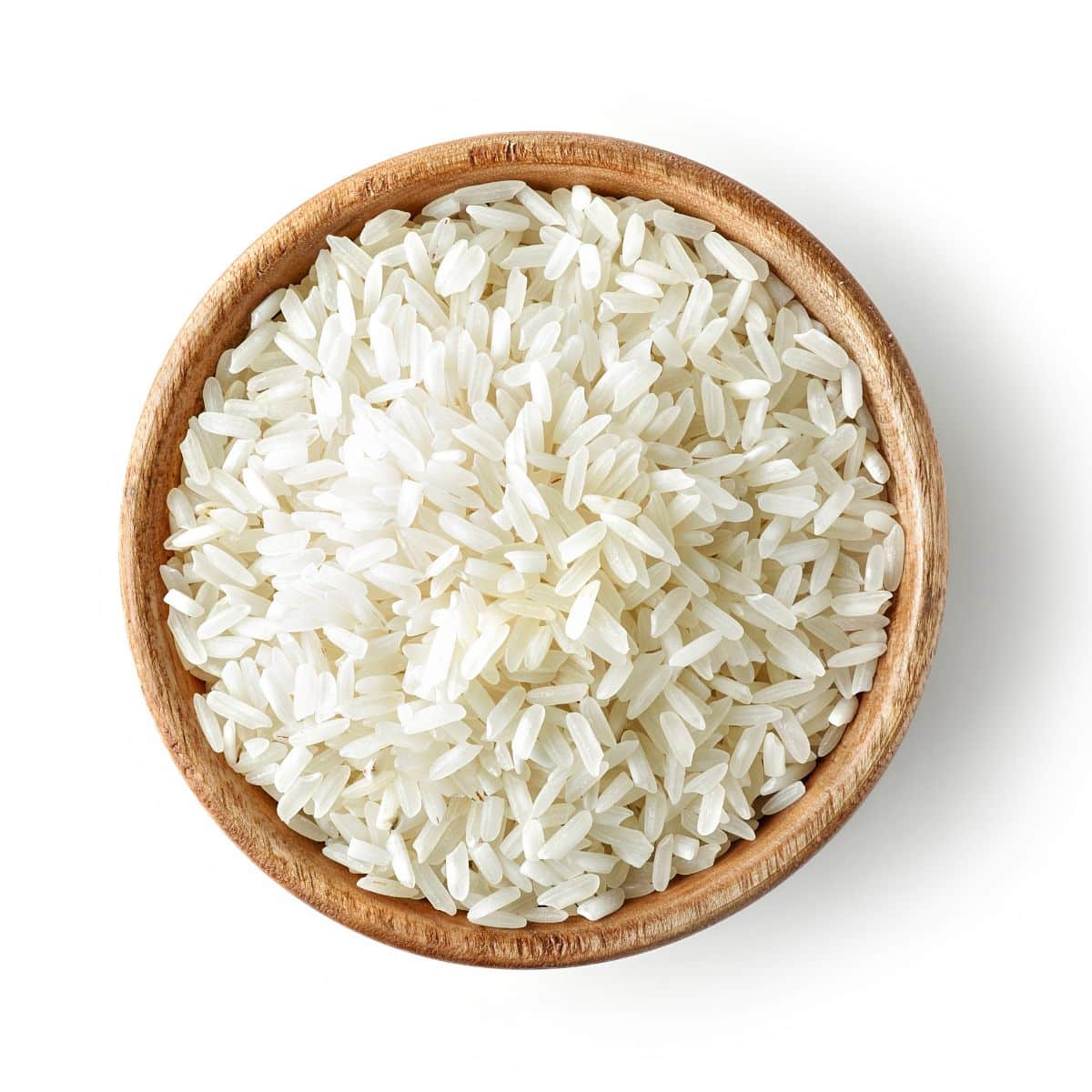
Origin and Flavo Wehani rice was developed in the United States, and is a hybrid variety of aromatic rice. It is a long-grain rice variety known for its unique buttery flavor with a hint of cinnamon. When cooked, it becomes fluffy and separate, with a slight chewy texture.
Uses: Wehani rice is a gourmet rice variety and is often used in salads, pilafs, and side dishes. Its distinctive flavor adds a special touch to various rice-based recipes.
White Rice
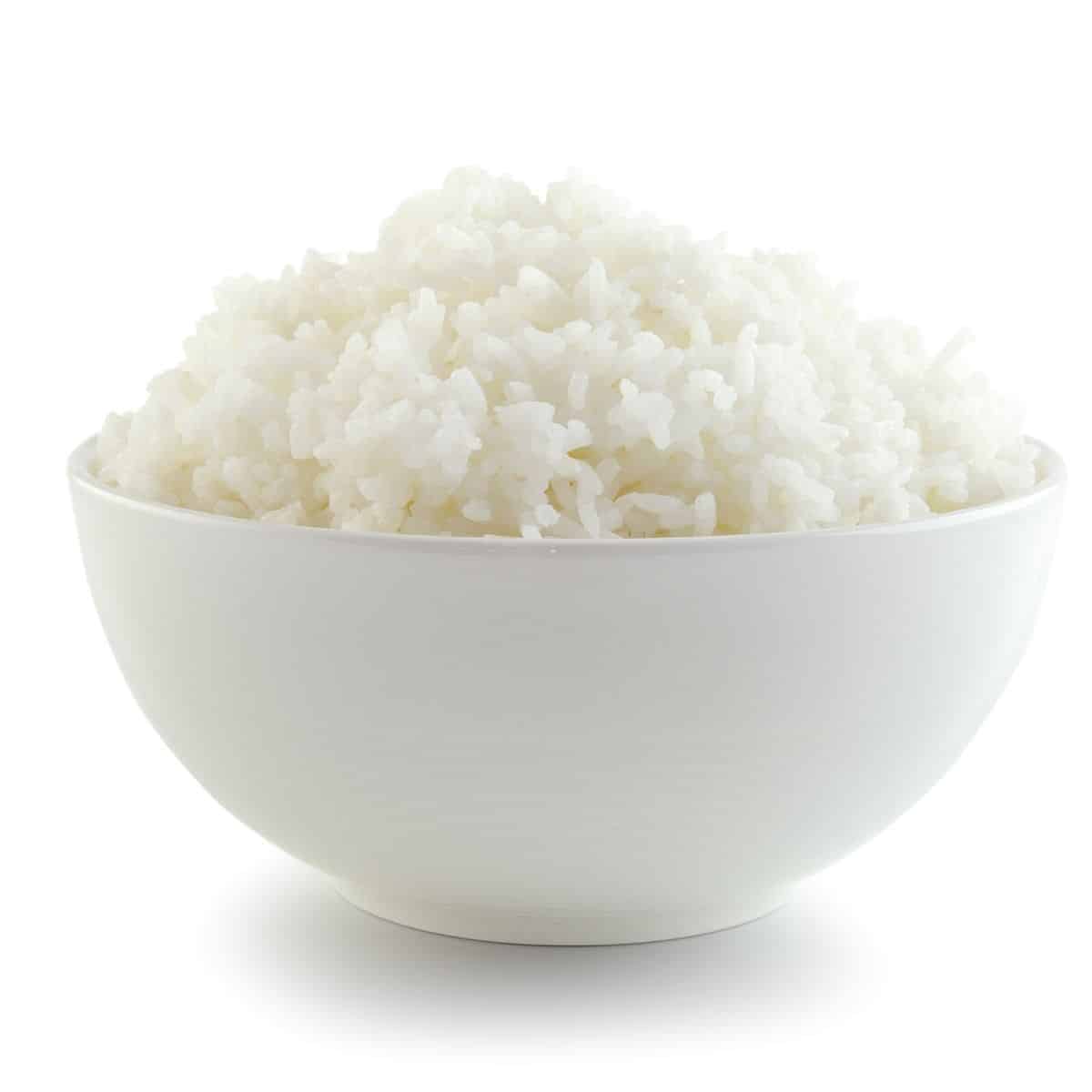
Origin and Flavor: White rice is cultivated worldwide and is a popular and common type of rice. It can be found in long, medium, or short-grain varieties, depending on the specific type. White rice has a mild and neutral flavor, and becomes fluffy and separate, with each grain maintaining its shape when cooked.
Uses: White rice is widely consumed as a staple food in many cuisines. It is commonly served with a variety of dishes, including curries, stir-fries, grilled meats, and stews. It is also used in rice-based desserts and rice puddings. Long-grained white rice is the most commonly used rice in American cooking.
Wild Rice
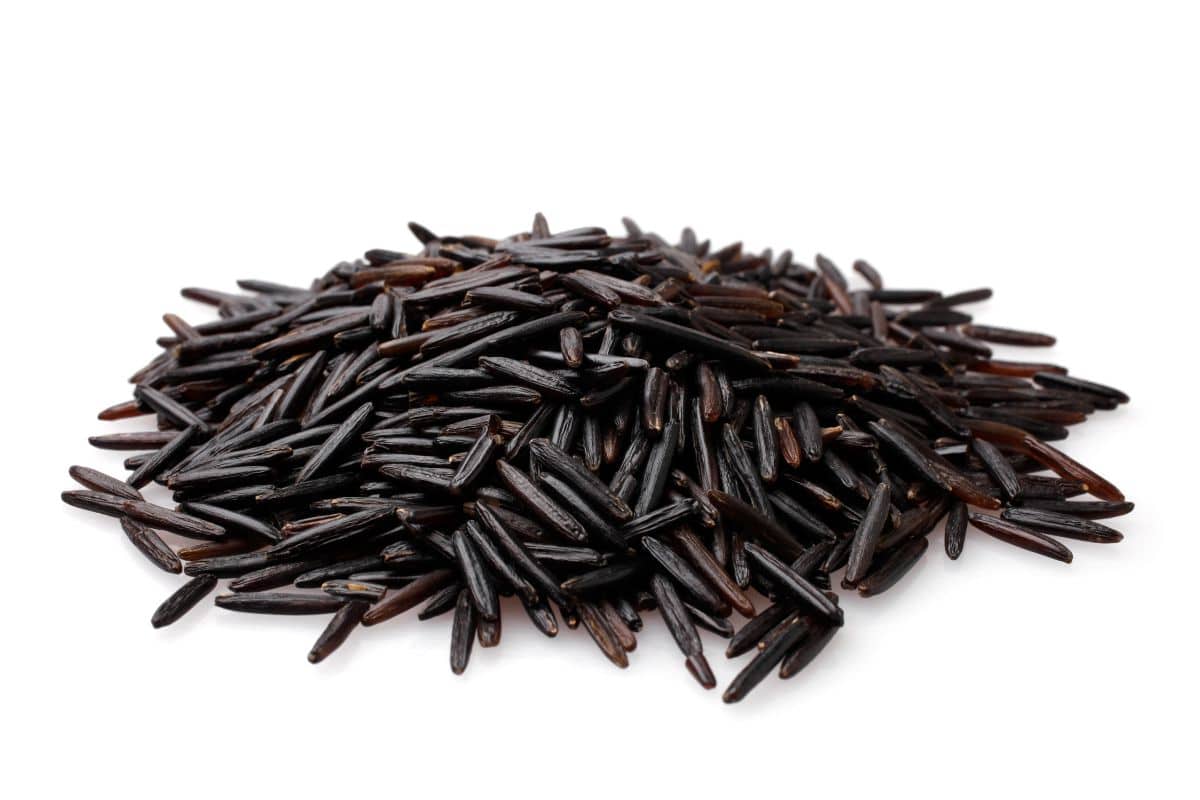
Origin and Flavor: Wild rice is native to North America, particularly the Great Lakes region of the United States and Canada. It is a long-grain rice variety, though technically, wild rice is not a true rice but a seed of aquatic grass. When cooked, wild rice has a chewy texture and a unique appearance with its long, dark purple to black, slender grains.
Uses: Wild rice is often used in pilafs, salads, and as a side dish for various meats and vegetables. It is also used as an ingredient in soups and stews, adding texture and flavor to the dishes.
Rice FAQs
Which Rice Varieties are the Healthiest?
We won’t rank these, but here are the healthiest types of rice and why:
- Brown Rice: Since the bran layer is intact, brown rice contains more protein, fiber, and vitamins than white rice, or rice in which the bran layer is removed.
- Black Rice: Black rice bran gets its distinct black to purple color from the high levels of anthocyanins, a healthful anti-oxidant. Black rice is also higher in protein and iron than other varieties of rice.
- Red Rice: Red rice is generally eaten with the bran and germ intact, greatly boosting its nutritional content over other rice varieties. The outer bran layer is rich in fiber, vitamins, and minerals, such as B vitamins, iron, and zinc. Additionally, red rice contains antioxidants, particularly anthocyanins, which contribute to its red color and offer potential health benefits.
- Wild Rice: You may recall that we said wild rice is actually a form of aquatic grass. Well, that grass is loaded with vitamins, minerals, protein, fiber, and antioxidants.
- Parboiled Rice: The process of parboiling results in rice with a substantially lower GI Score than most rice varieties.You won’t get the same insulin spike with parboiled rice as you might with normal white rice.
Is Rice Keto Friendly?
No, rice is not. According to the USDA ½ cup of long-grain white rice contains 22g of carbs.
How Much Rice Do People Eat?
Americans eat on average 27 pounds of rice a year. Worldwide that figure rises to 148 pounds per person! According to the National Institute for Health, rice provides about 20% of the world’s calories.
How Do I Know How Much Rice to Cook?
That is always the big question with rice especially if you don’t want to have left over rice for the next few days. It isn’t complicated, but there are a few things to consider, so we wrote a whole separate article on How Much Rice Per Person.
Do You Need to Wash Rice?
Your best bet is to read the package and your recipe. That sounds like a cop out, but it isn’t. Generally yes, you want to wash rice and use fresh water to cook it.
You do this because excess residual starch can gelatinize in the hot cooking water and make the rice grains stick together. Conversely, American enriched rice is cleaned to a higher standard set by the FDA, and rinsing might wash away some of the nutritional coatings. So, read the package.
How Much Does Rice Expand?
Typically 1 cup of uncooked rice will yield about 3 cups of cooked rice, but this varies by type.
How Much Water Do You Put in Rice?
The standard rice to water ratio is generally 1:2. So, 1 cup of rice and 2 cups of water. This can vary with how you want the rice to come out and the type of grain, so read the package.
Where is Rice Grown in the USA?
Arkansas is the leading producer at 46% of all grown. California follows at 18%. Louisiana is 3rd at 14%. Mississippi is 4th at 7%. Missouri is 5th at 6%. Texas gets the 6th place ribbon (what color is that?) at 5%. Together the USA plants almost 3 million acres of rice a year.
That wraps up our look at 50 different kinds of rice. We hope you found some information you can use here today, and as always happy cooking!
Trivia Answer
The Answer is D) 148 lbs per person, and did you know that 50% of all rice eaten in the world is grown within 8 miles of where it was planted.
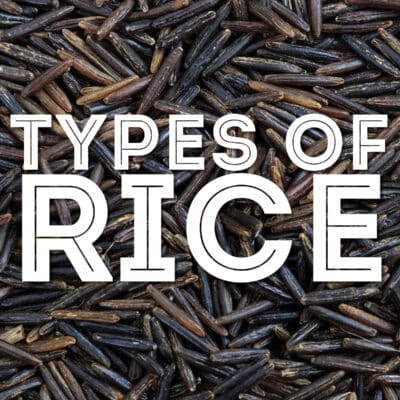
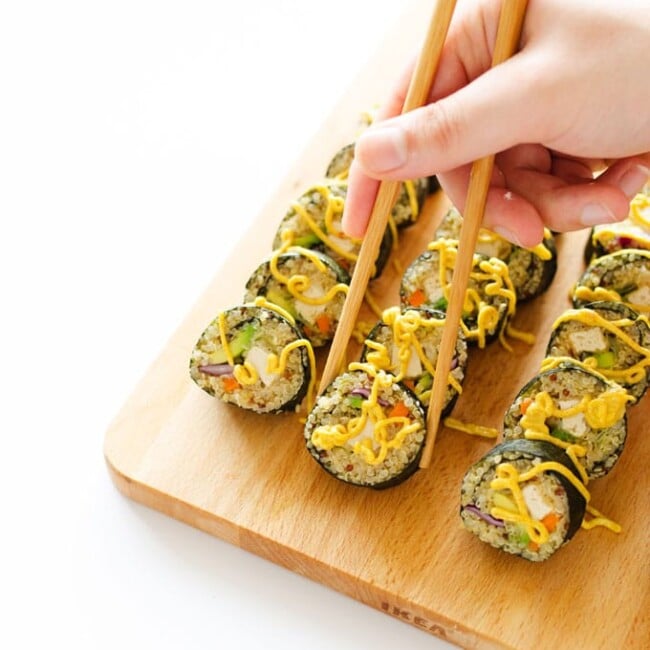
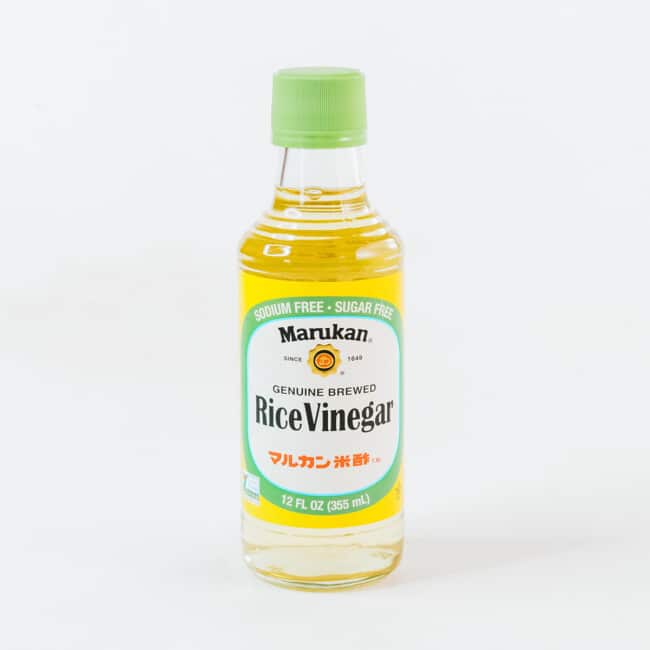
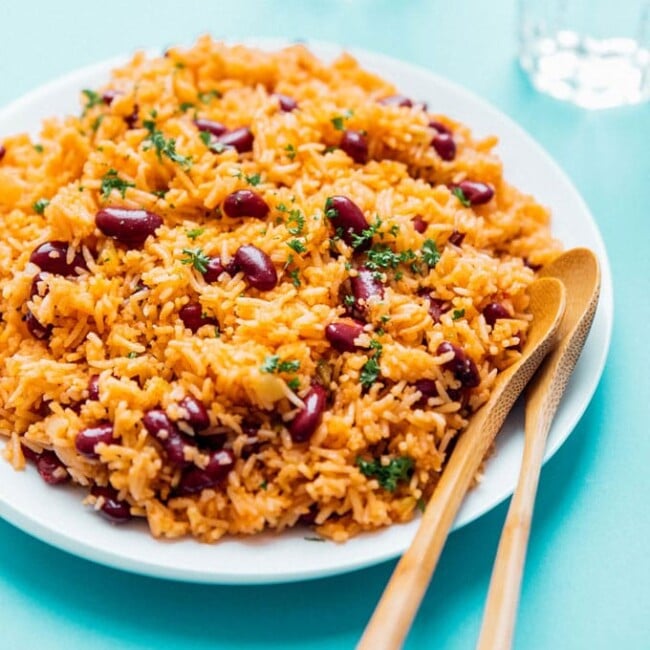
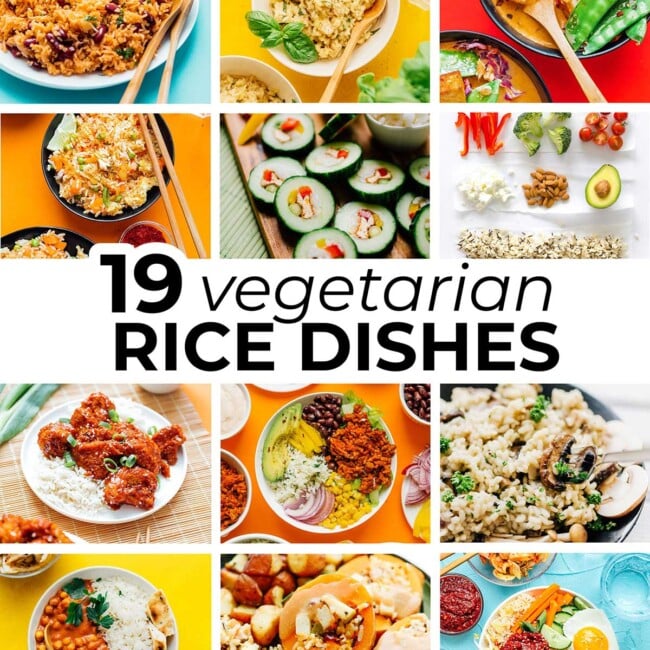
adam kunst says
In a sea of terrible list-type articles, this one is surprisingly informative and useful. Wonderful
Sarah Bond says
Happy to hear you found this article useful, Adam! We’re a small team who works hard to help folks in the kitchen, so this means a lot 😀